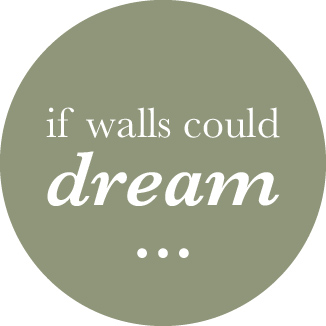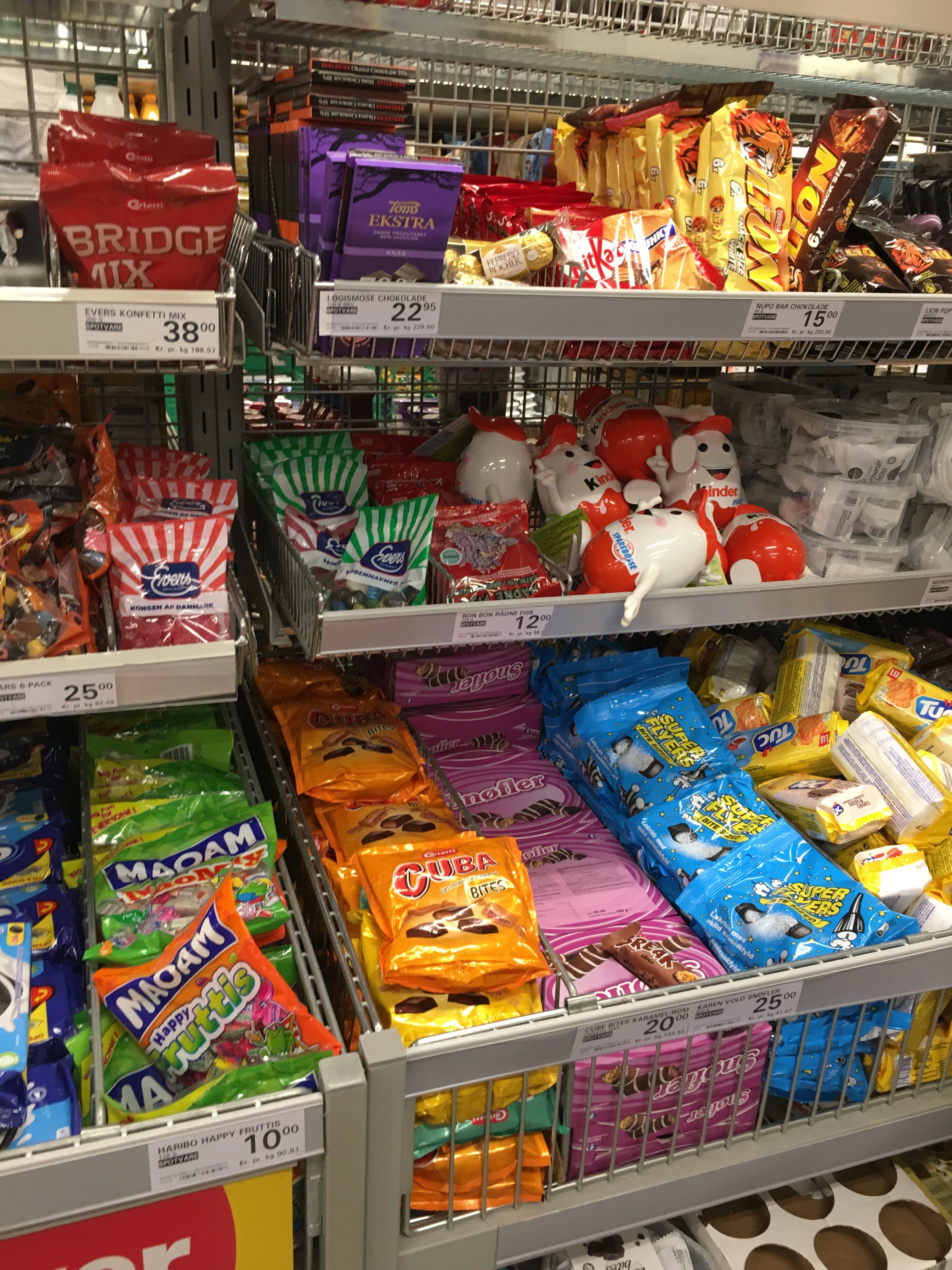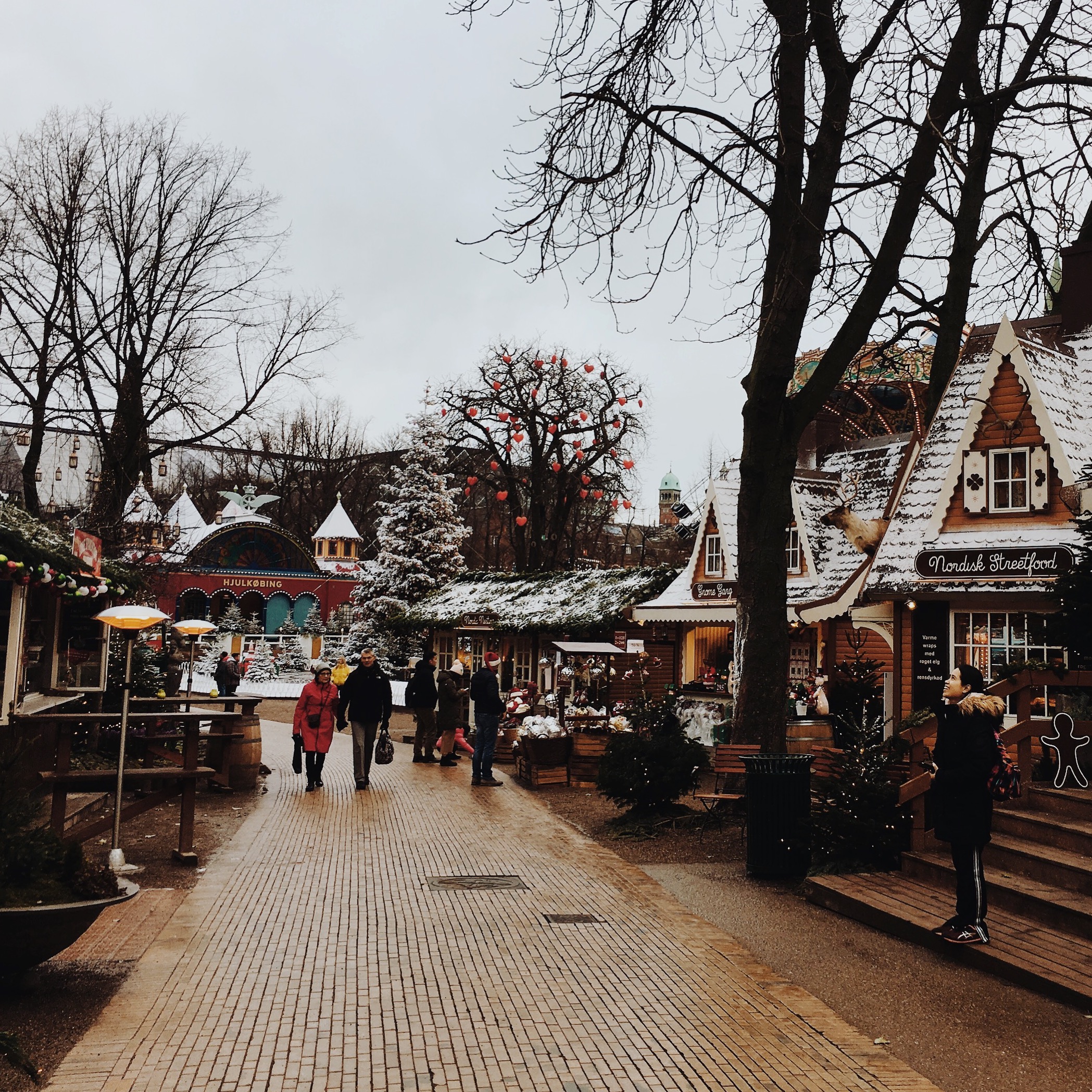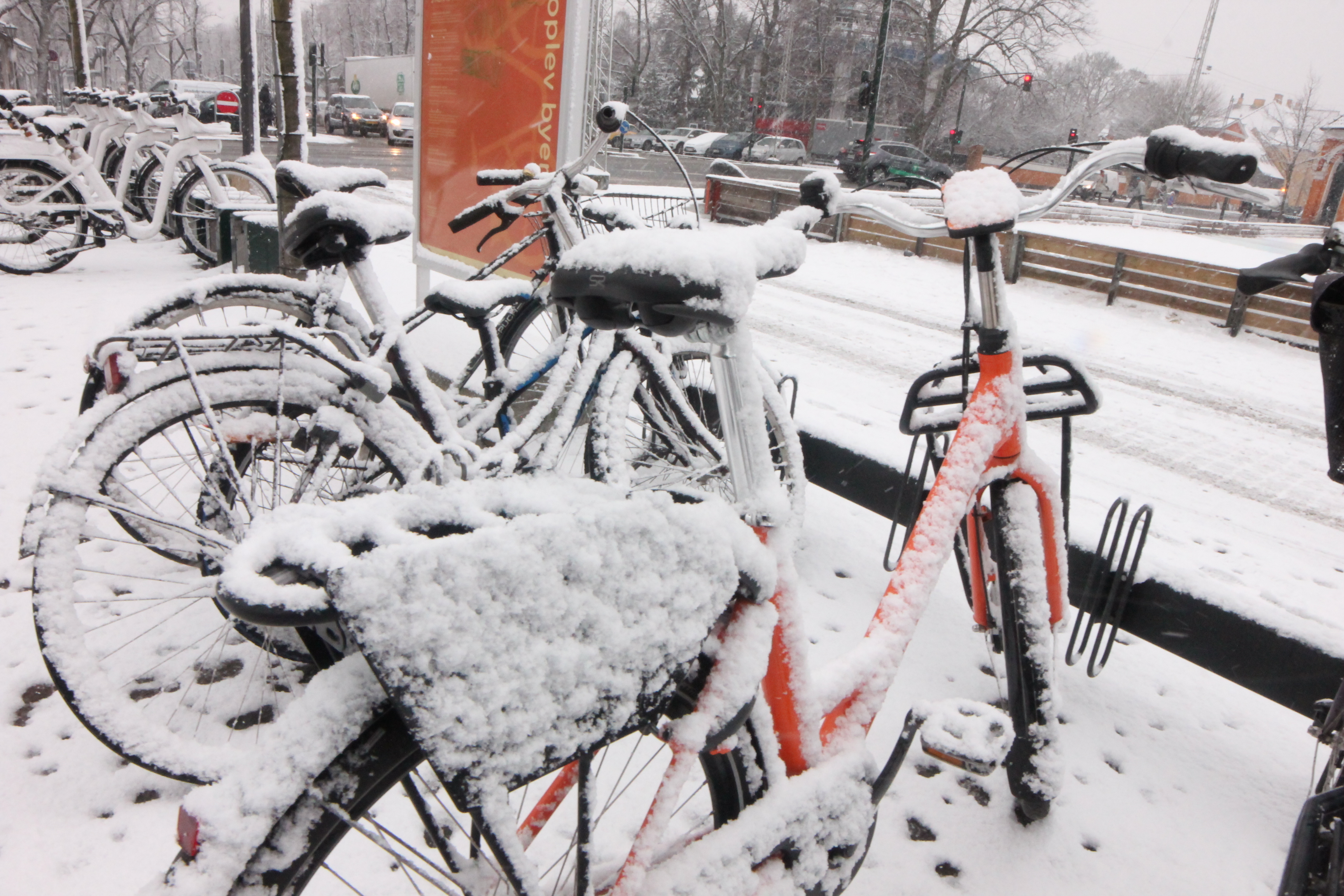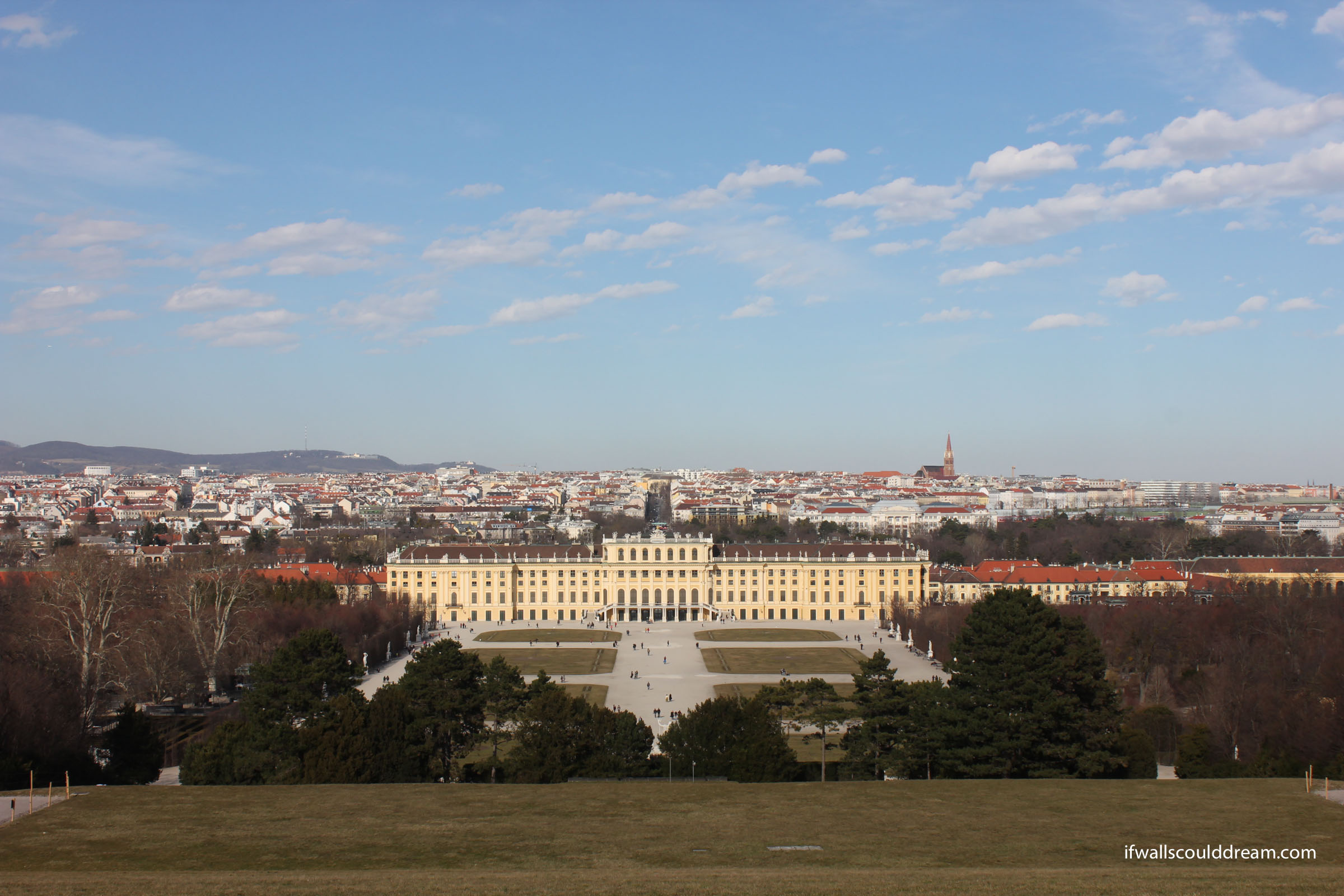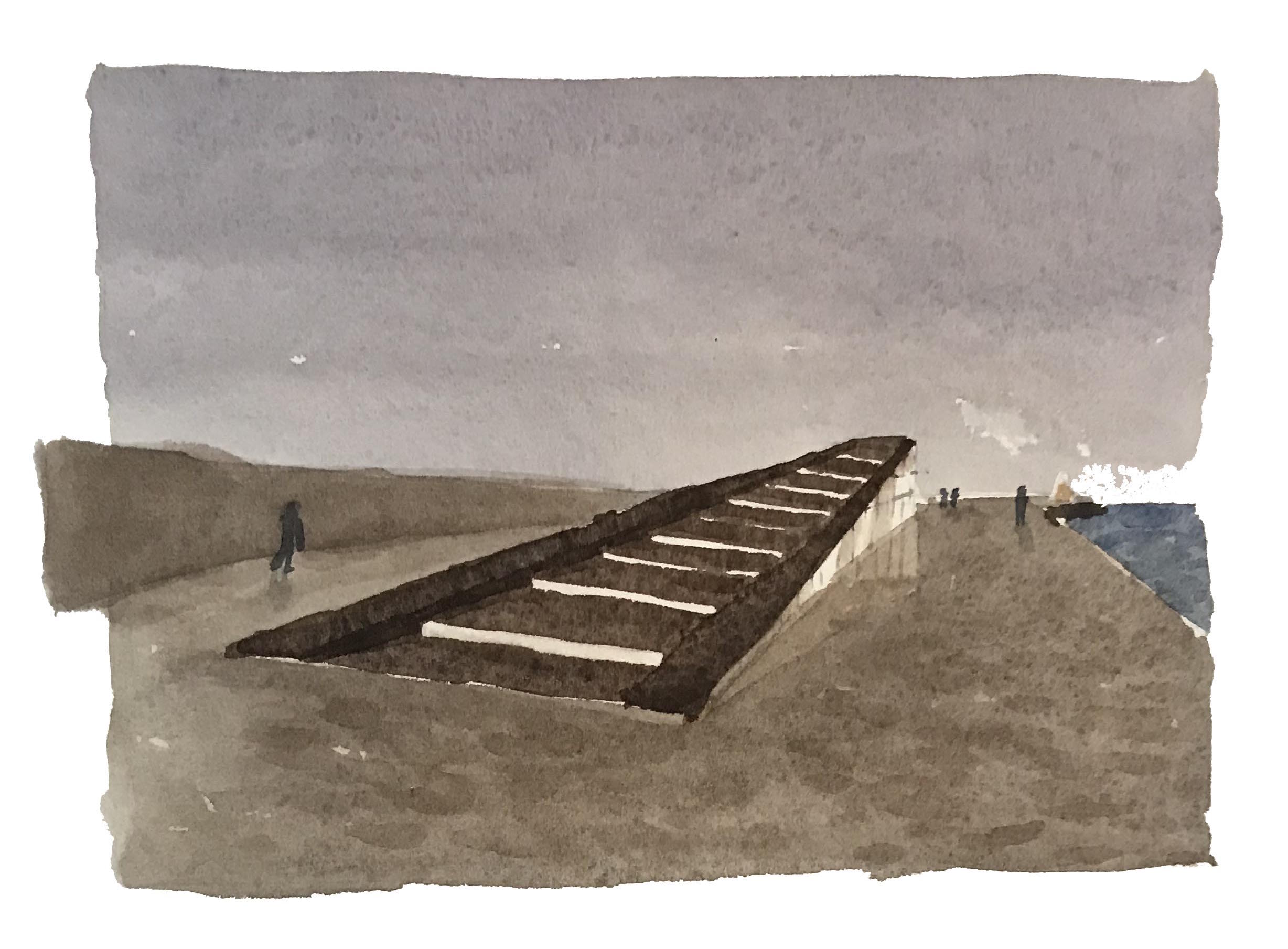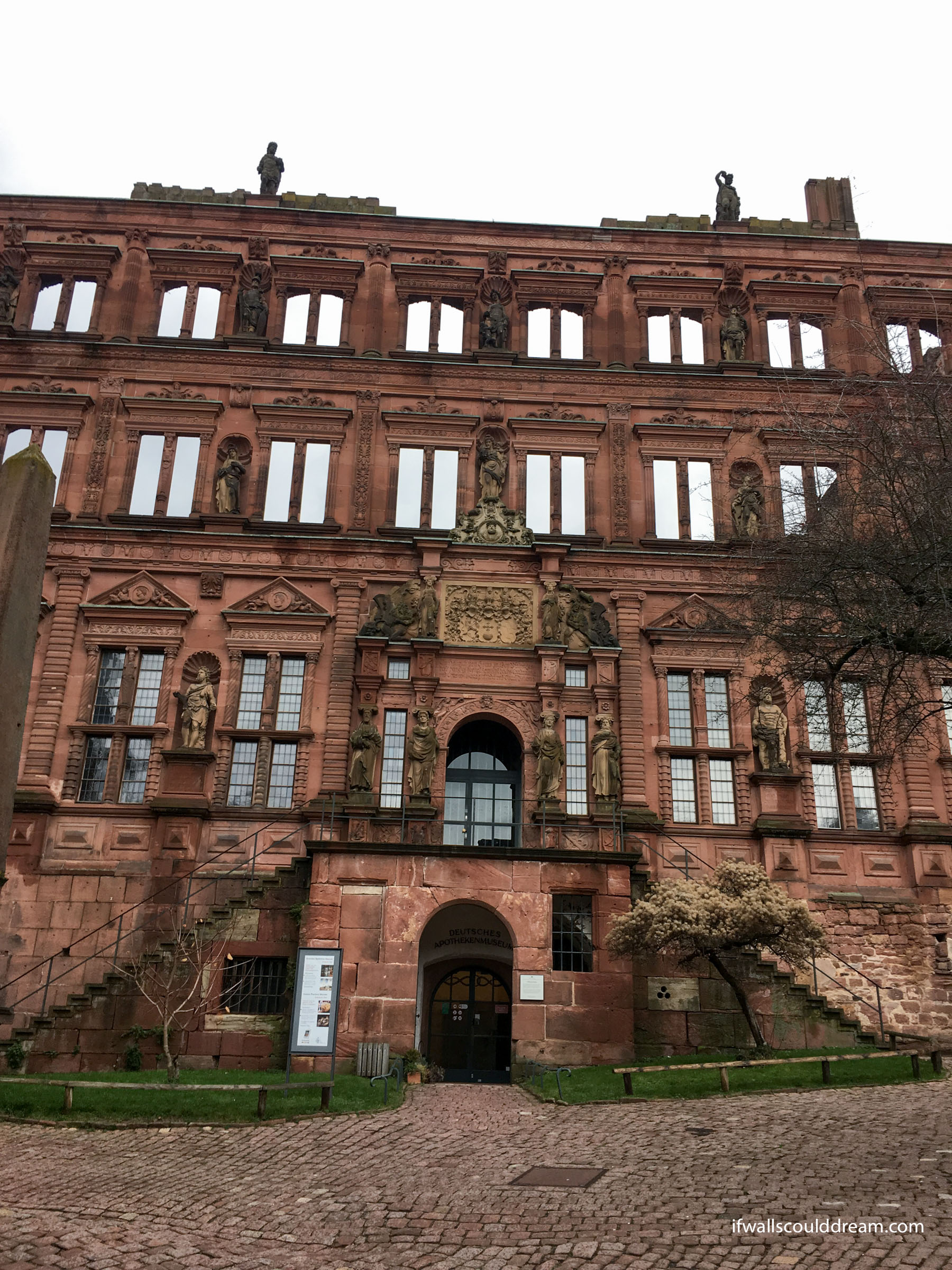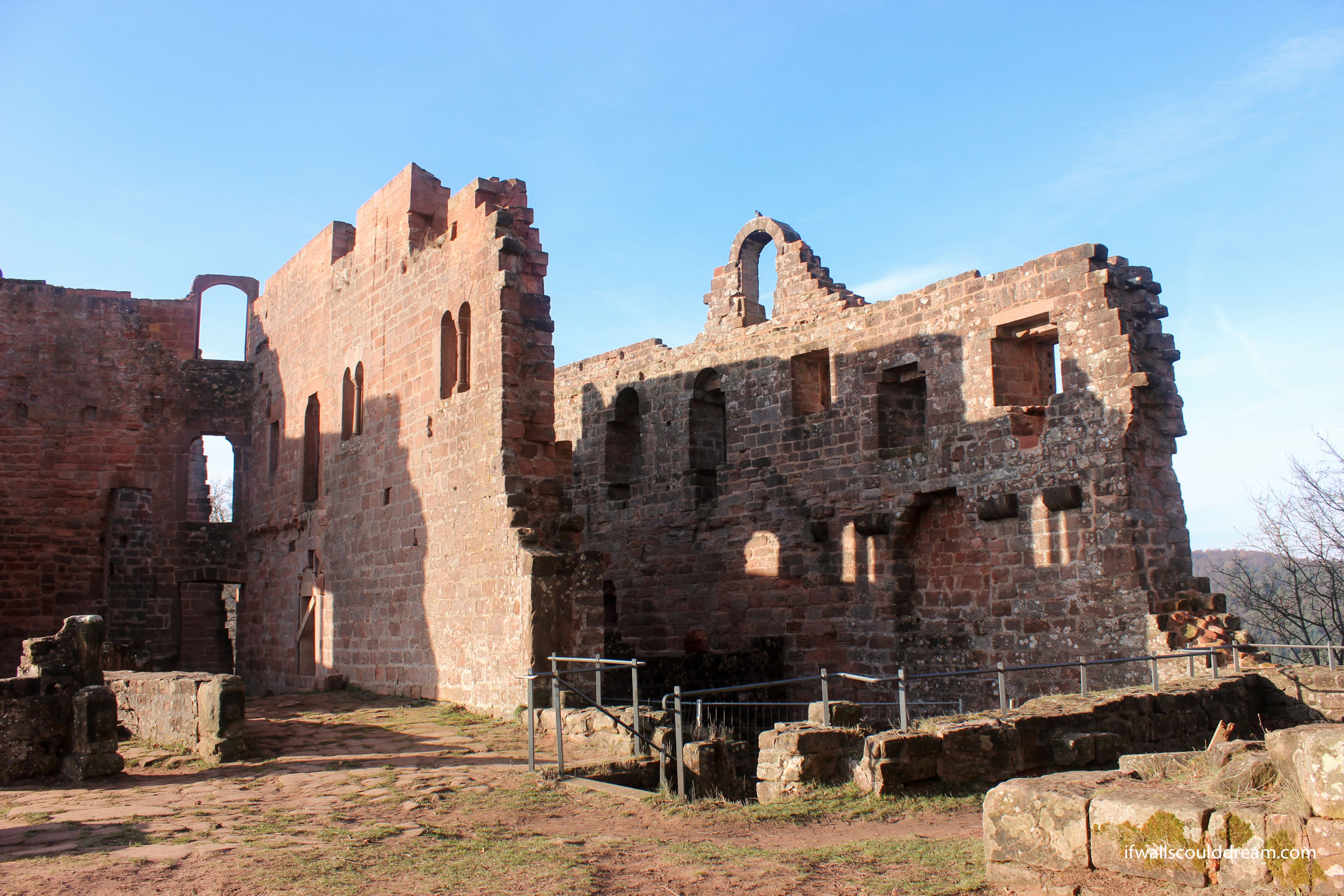Grocery Shopping in Copenhagen
Shopping for groceries abroad is always such an adventure. I think it’s fun to wander around the store, unsure what anything is called, and search for your food like a treasure hunt, but if you like checking off your list, grocery shopping in Copenhagen might be more of a challenge.
Being a college student, I shopped at the cheapest grocery stores possible. Luckily, there was a Netto just a few blocks from my apartment. Netto is the cheapest of cheap grocery stores and it’s always an adventure trying to find what you want, but you can also happen upon great bargains! When I wanted something specific, I would go to Fotex. My Danish roomate also told me about Kvickly, which is a bigger grocery store like a small Target that has clothes and household items too. That’s where I got my bike helmet and tupperware.
Here are some highlights of my time shopping in Denmark:
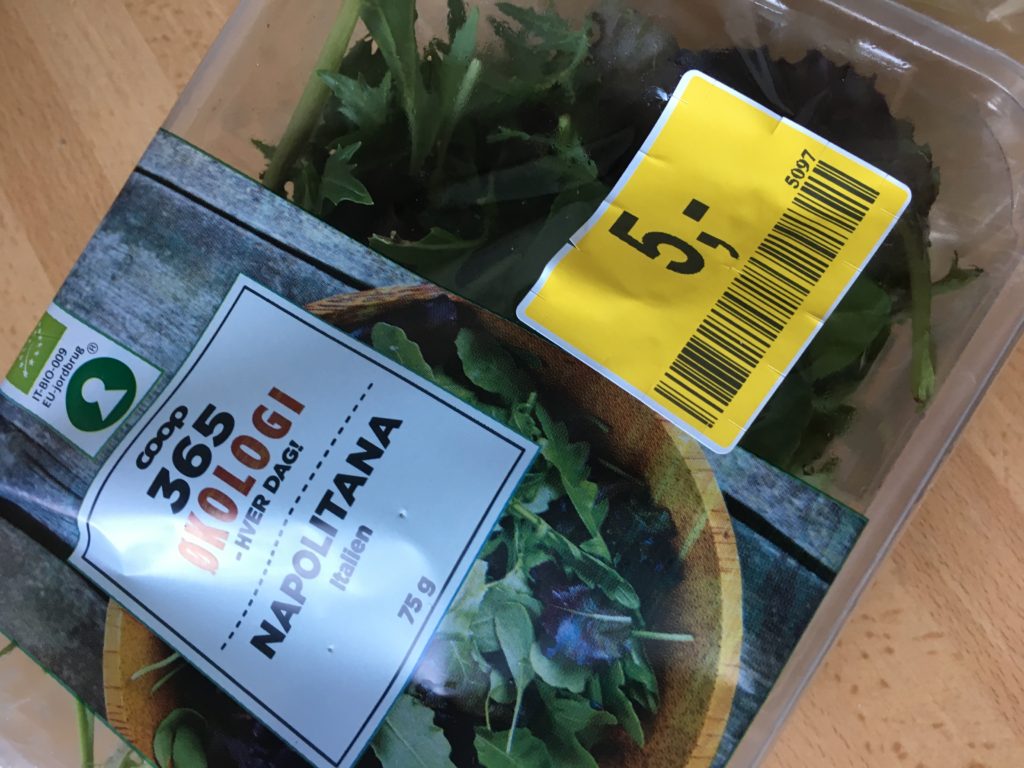
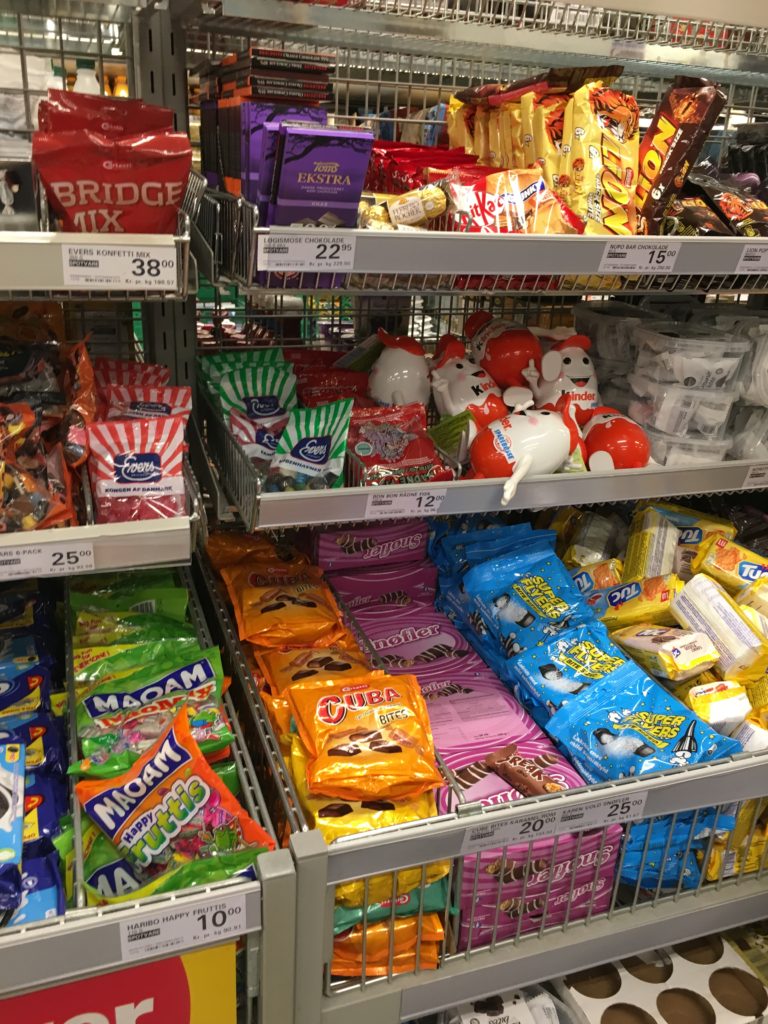
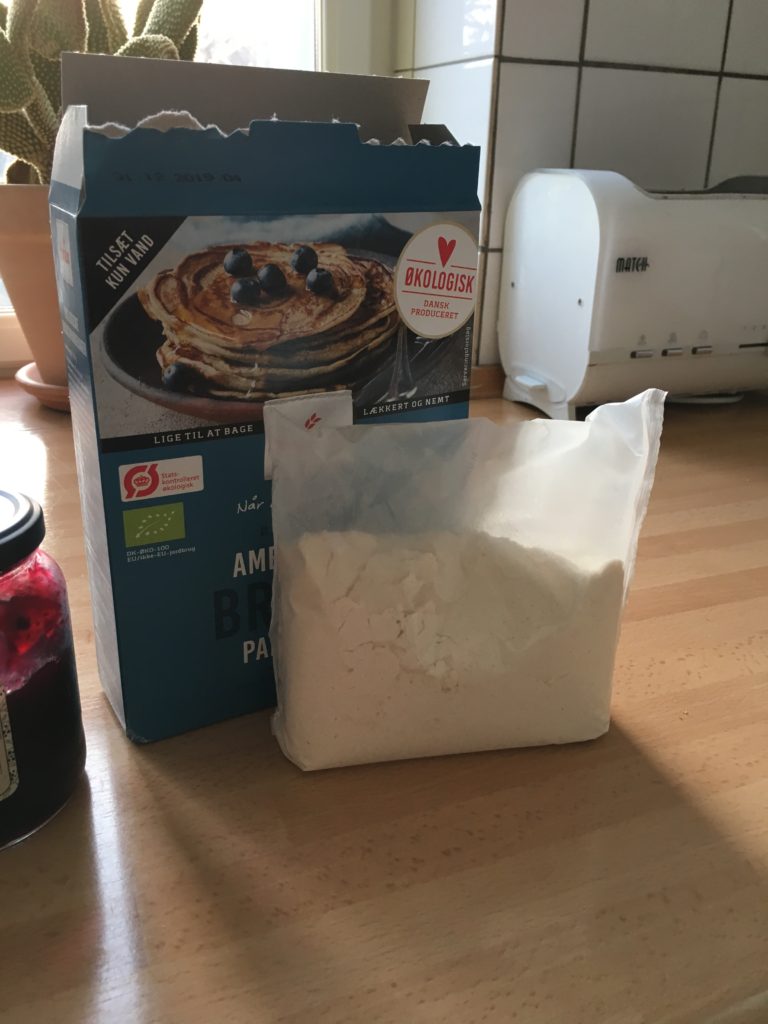
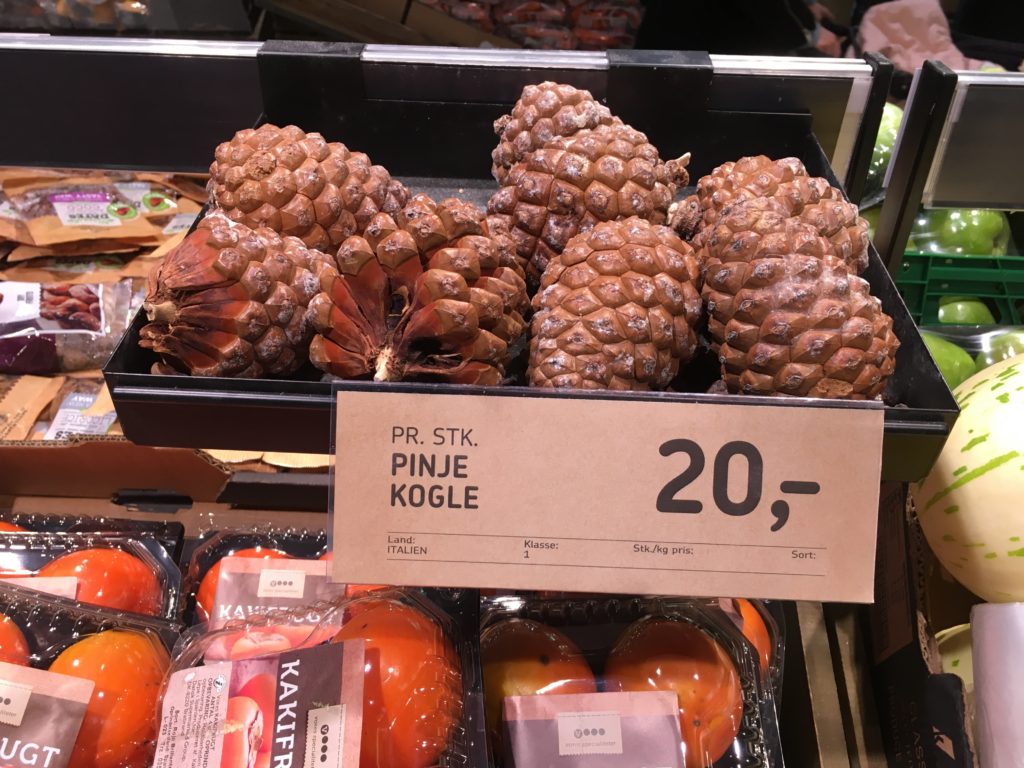
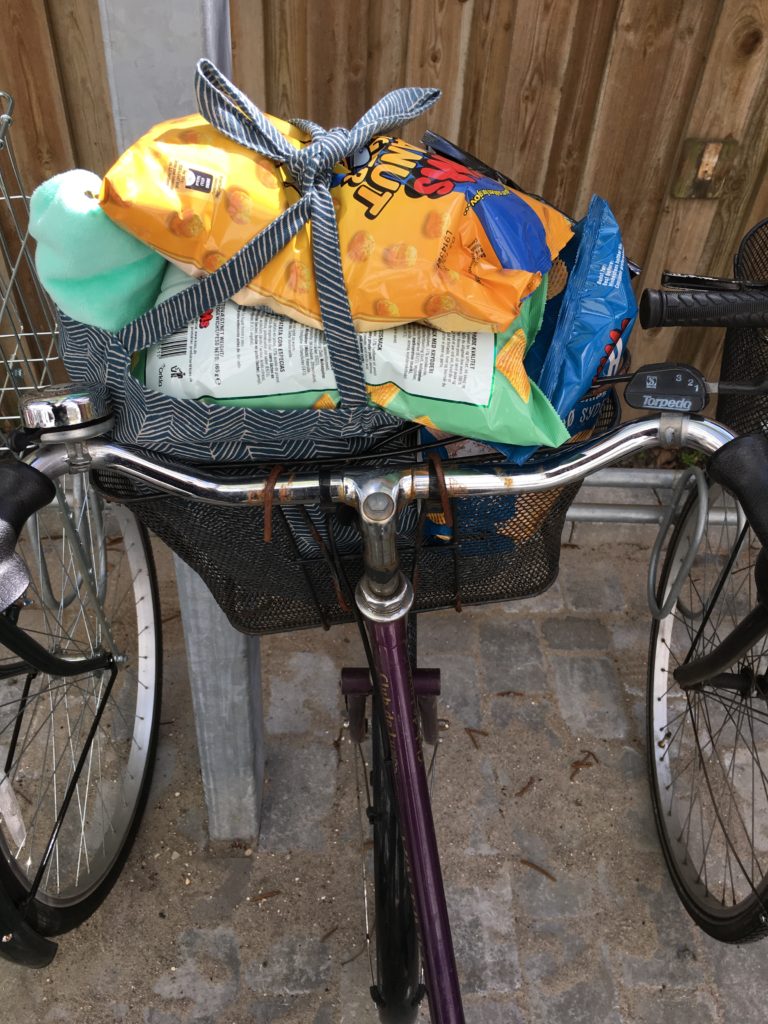
Foods I didn’t expect to miss…
Friends who had studied in Denmark before had said that I wouldn’t be able to find peanut butter here which I definitely can. When I was packing to come to Denmark, I wanted to get my host family some fun American foods but I didn’t know what they’d have here or not have. I’ve been surprised by a few foods that I would’ve expected them to have that they don’t:
- Bisquick (making pancakes from scratch is harder than I thought!)
- Root beer (my host sisters and I were eating jelly bellies the other day and they asked me what root beer was and if it was actually beer. I told them no it’s not beer, and I don’t know why it’s called beer, but I don’t know how to describe the flavor.)
- Banana bread (I wanted to make banana bread one day and my host family hadn’t heard of it! They were confused if it was a bread or a cake and I said it’s a little like both! They liked it though.)
- Tater tots (another thing I was surprised my host family hadn’t heard of! I bravely decided to make them from scratch one day and it was really hard and not as good as real tater tots.)
- Tofu (I guess this is kind of a weird vegetarian food but they had some tofu just not the kind I was used too, it was either too silky or too dry.)
- Refried beans and cheddar cheese (I don’t think I ever found refried beans so I just used black beans for burritos which is healthier I guess and they did have cheddar cheese but it was nothing compared to Tillamook!)
- And last but not least… ranch dressing! (They have creme fraiche but it’s just not the same!)
All in all, I survived and I actually ate really well and enjoyed being more adventurous with what I ate and trying new things. My roommates and I second semester were all vegetarians so we shared recipes and roasted a lot of veggies.
If walls could dream… they’d dream of grocery shopping abroad!
Tivoli
Tivoli is the amusement park in the center of Copenhagen. Yes, you read that right, there’s an amusement park in the center of Copenhagen! Right next to the central train station, Tivoli is a festive little park for all ages. There are rides as well as restaurants, shows, and cute seasonal decorations. In the winter, they have ice skating and in the summer, they have outdoor concerts! It’s a great place to go with friends.
If you’re in Copenhagen for an extended period of time, you should check out the monthly pass. You have to sign up for at least six months but it pays for itself in three trips.
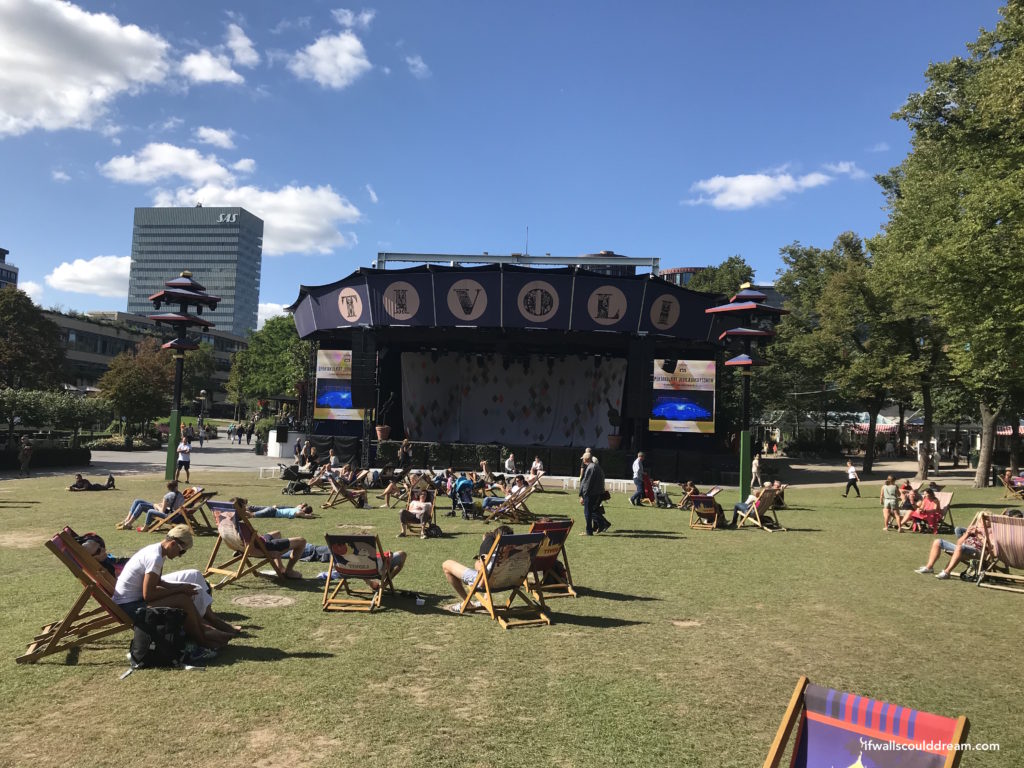
Summer 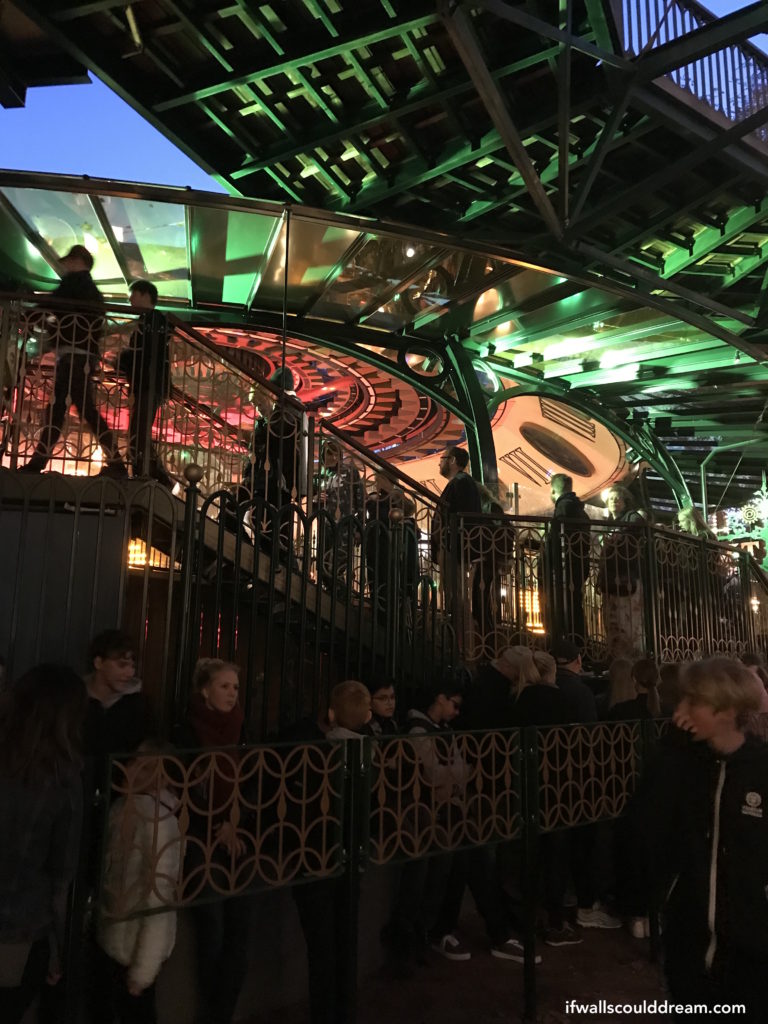
Rides 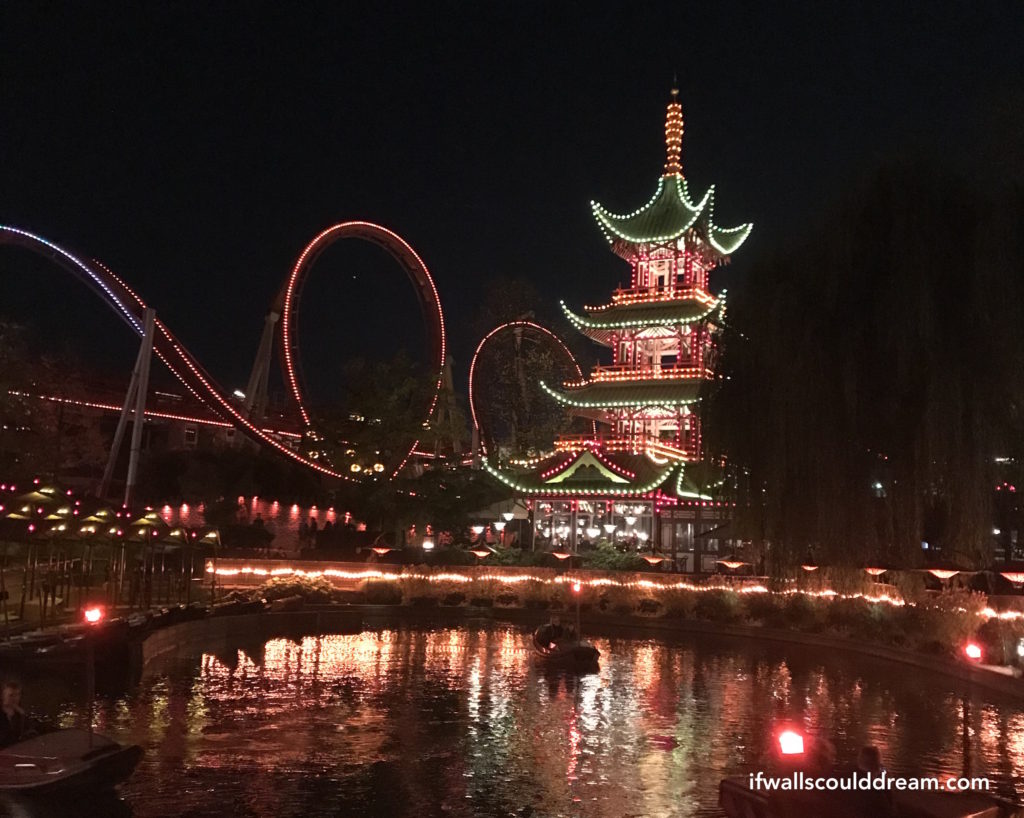
The Lake 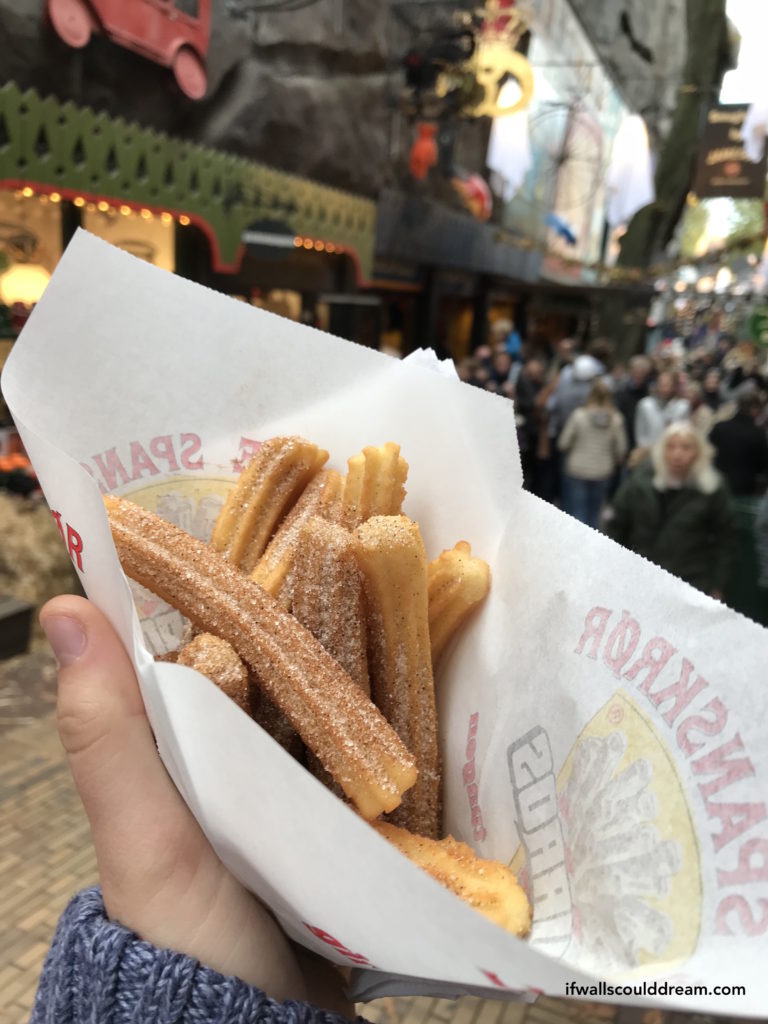
Churros 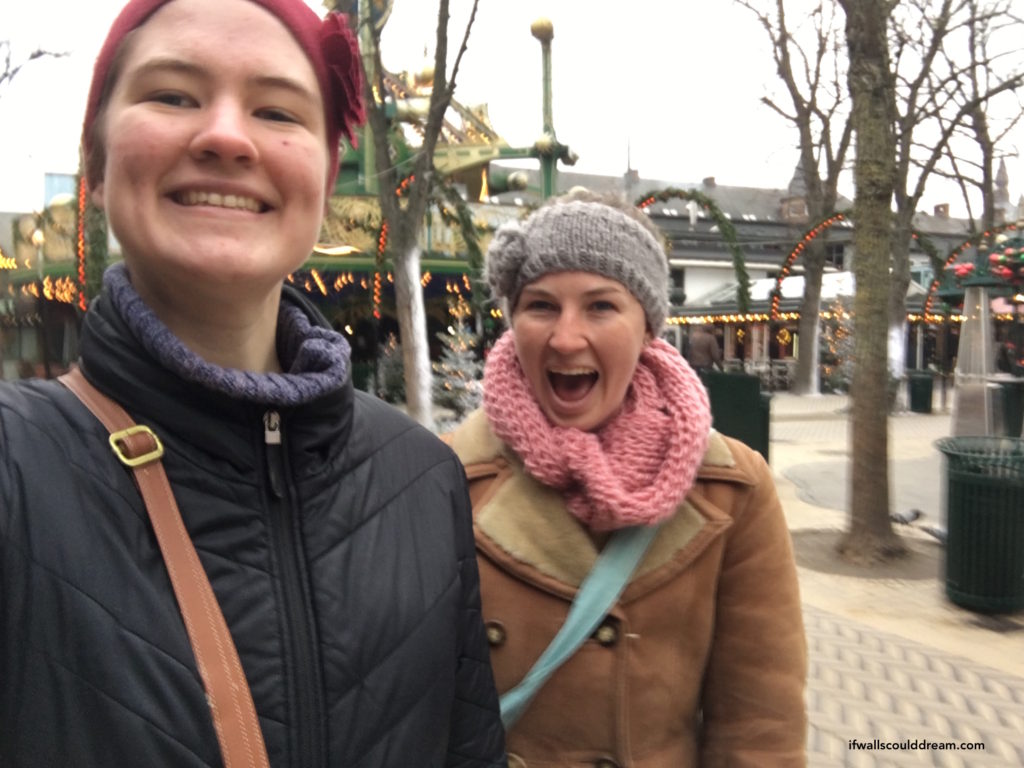
Mattea 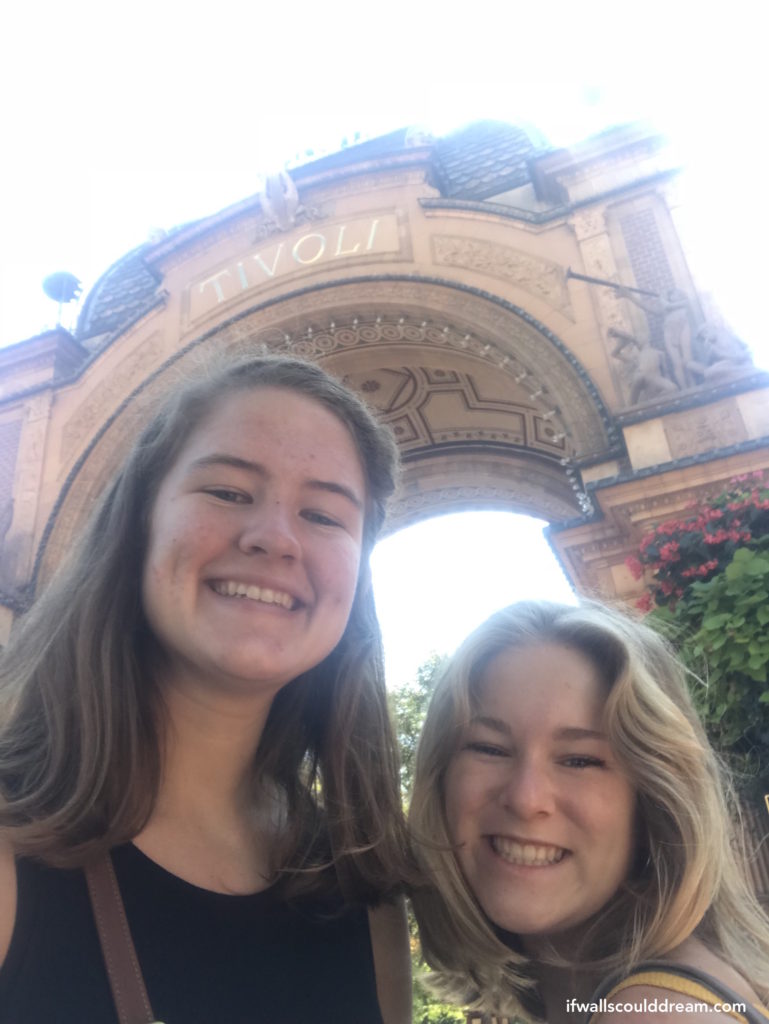
Grace 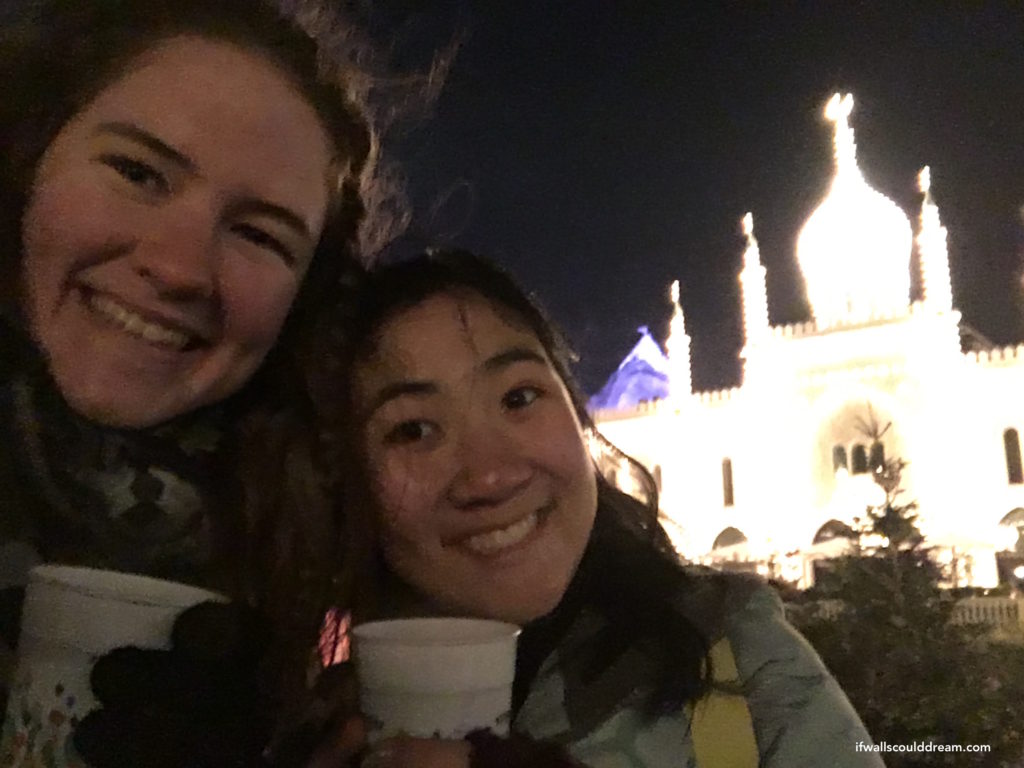
Janet 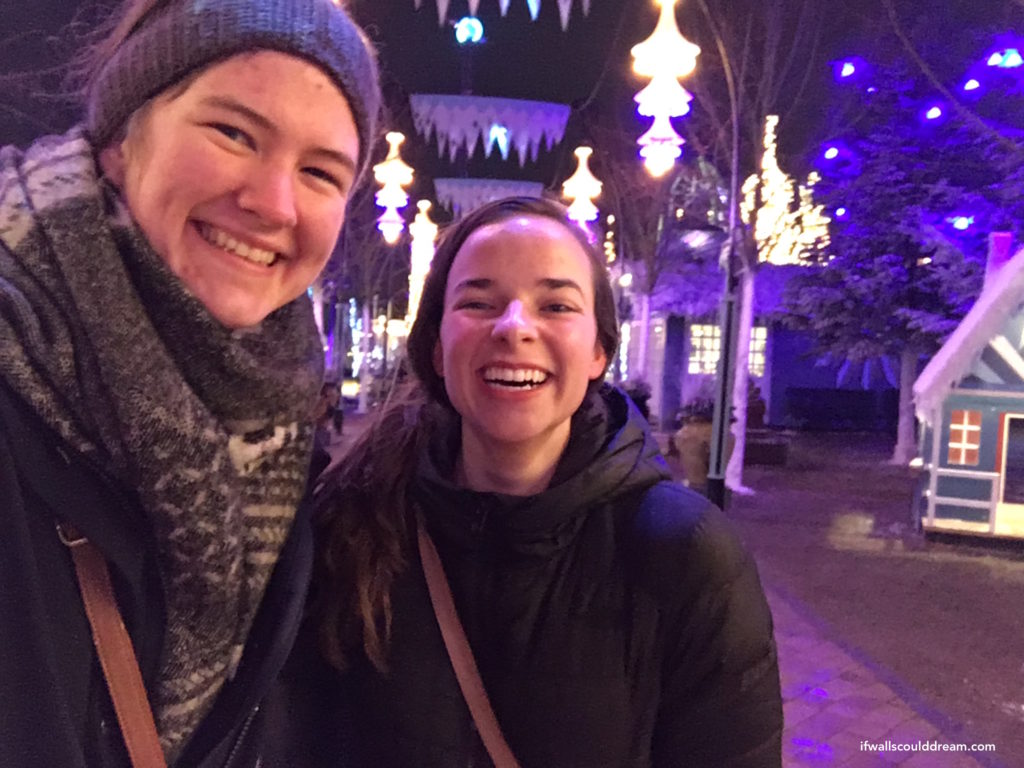
Kara 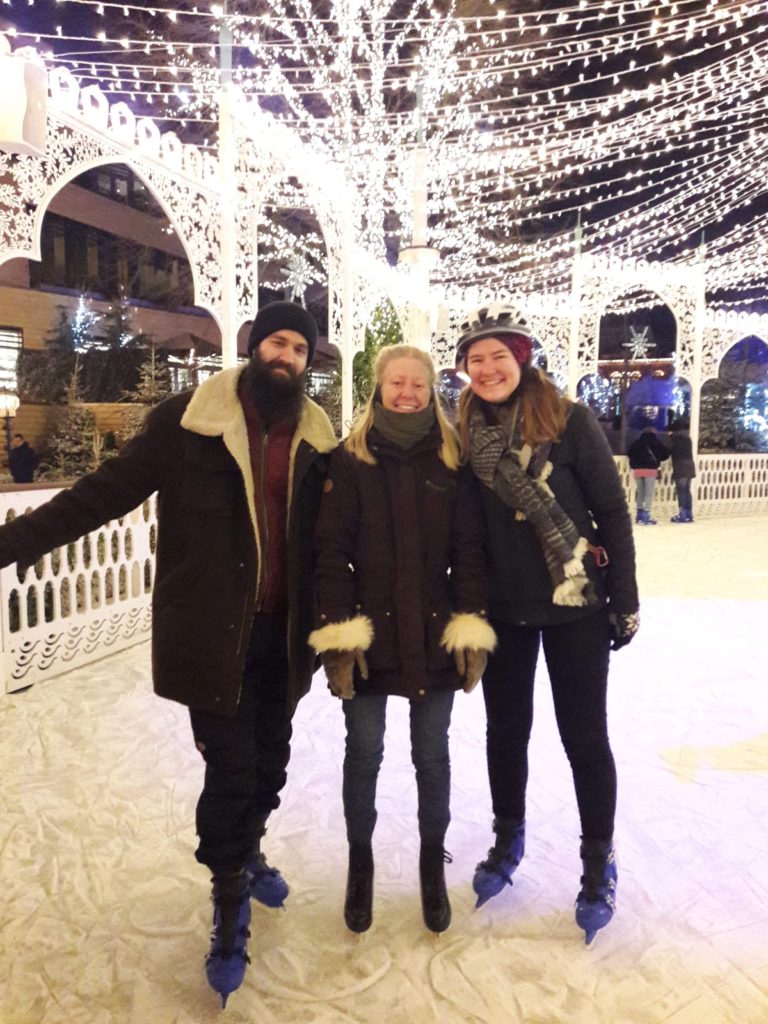
Alex & Olivia
If walls could dream… they’d dream of visiting Tivoli!
How to Bike Like a Local in Copenhagen
Biking is an integral part of the Danish lifestyle and if you visit Copenhagen, you really should bike around to see the city. It’s also the fastest and easiest way to get around. Here’s a few things you should know to bike like a local (and not get run over!)
Renting a Bike
You can use an app like Donkey Republic or Bycyklen to rent an electric bike but if you want to look like a local, consider renting a bike from a local bike shop. They speak English and you can rent a bike for the day or for a whole year! You can also rent or buy a helmet there to stay safe!
Stopping
It’s obviously important to know how to stop before you start going. There’s two things to remember here:
1. The bike you rent might have different brakes than you are used to. I was used to hand brakes (and I didn’t even know there were other types of bike brakes!) before coming to Copenhagen, but both the bikes I’ve ridden here have backpedal brakes.
2. Signal before you stop by raising your hand. (To really fit in with the Danes, raise it like you’re asking a question in school, but you want to be cool, so you raise it just enough for the teacher to see you but not so much that the other kids think you’re a nerd. Around shoulder height will do.)
Making a Right Turn
Right turns are super easy! Just signal with your right hand, yield to pedestrians, and go!
Making a Left Turn
Left turns are a little trickier. You have two options:
1. If the light is green: cross the street, signal that you’re stopping by raising your hand like you’re asking a question and stop at the opposite corner. Pivot your bike to the left and wait for the light to switch, then proceed.
2. If the light is red: you can be sneaky and hop off your bike, walk it across the crosswalk to your left and then wait for the light to switch and walk it across the crosswalk again and then jump on and go.
Where’s the Bike Lane?!
Usually the bike lane is between the car lane and the sidewalk which makes sense and it usually has bikes painted on it. However, it can get a little tricky out in the suburbs because sometimes both directions of bike lane are on one side of the road, it’s like a mini bike road next to the car road. Anyways, it’s really not that hard to figure out, just a fun little quirk I wanted to point out. Also, the smaller streets don’t have designated bike lanes and it feels so strange after biking in bike lanes for so long to bike just in the street!
Bringing Your Bike on the Train
It’s super nice that it’s free to bring your bike on the s-train. (For the metro you can buy a cheap bike ticket on your phone and bring it on during non-rush hour times. I don’t think you can bring your bike on the bus but I’ve never tried it.) On the s-train there’s a special car with bike racks, just wait at the station by the bike painted on the ground (or by the handicap dots) because that’s where the bike car will be when the train stops. On longer trains, there are specific bike entry and exit doors to ease traffic flow.
Locking Your Bike
One last note about bikes in Copenhagen, they usually just have a lock on the back wheel. Danes are so trusting and Copenhagen is so safe that you don’t have to chain your bike to something when you park it, you just lock the back wheel and no one will steal it! That being said, bike theft is the largest crime in Copenhagen and I would advise against leaving your bike in the city center overnight if you can help it and never ever leave it unlocked!
Happy biking!
If walls could dream… they’d dream of biking around Copenhagen.
Hier Wohnte…
Here lived…
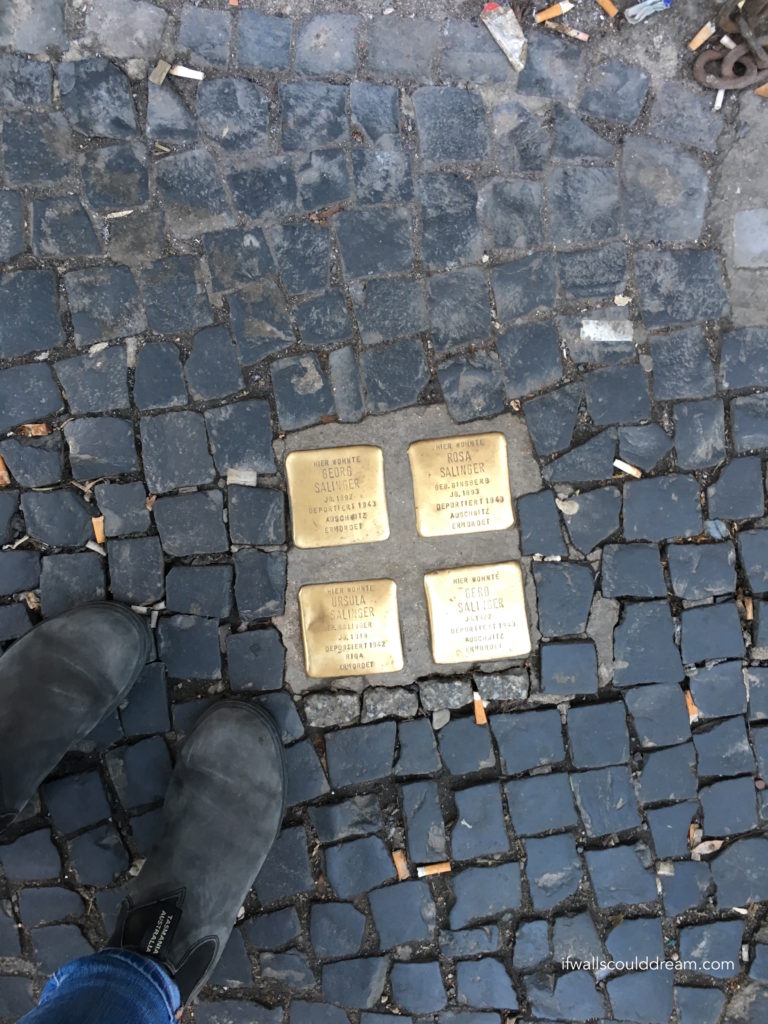
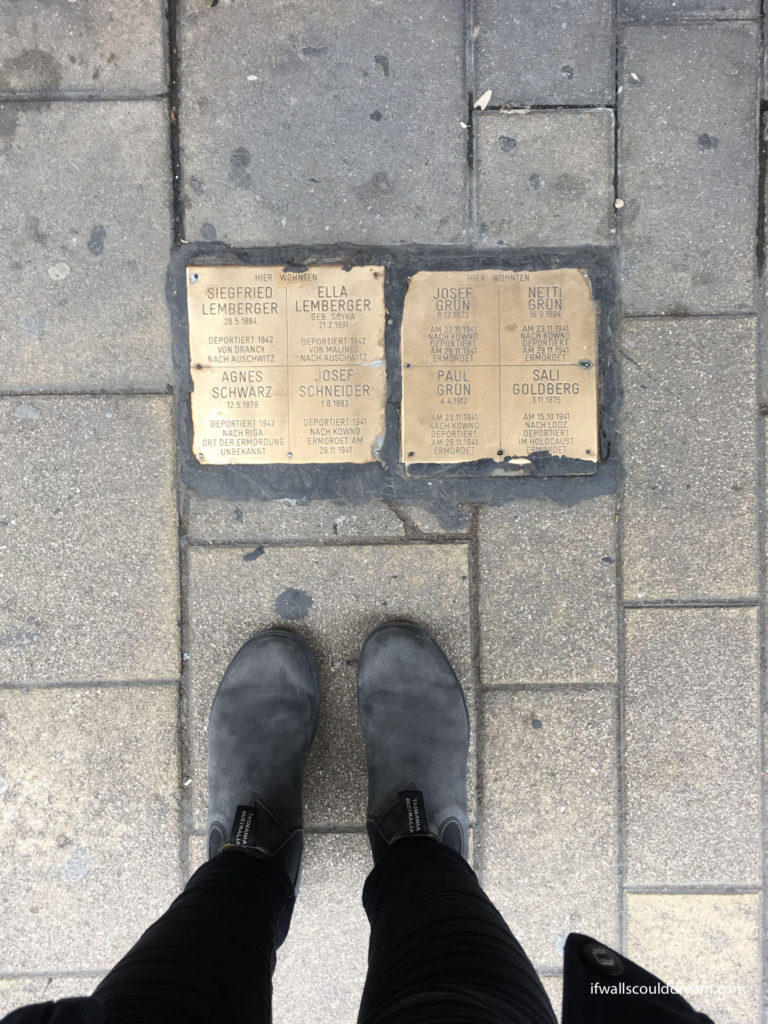
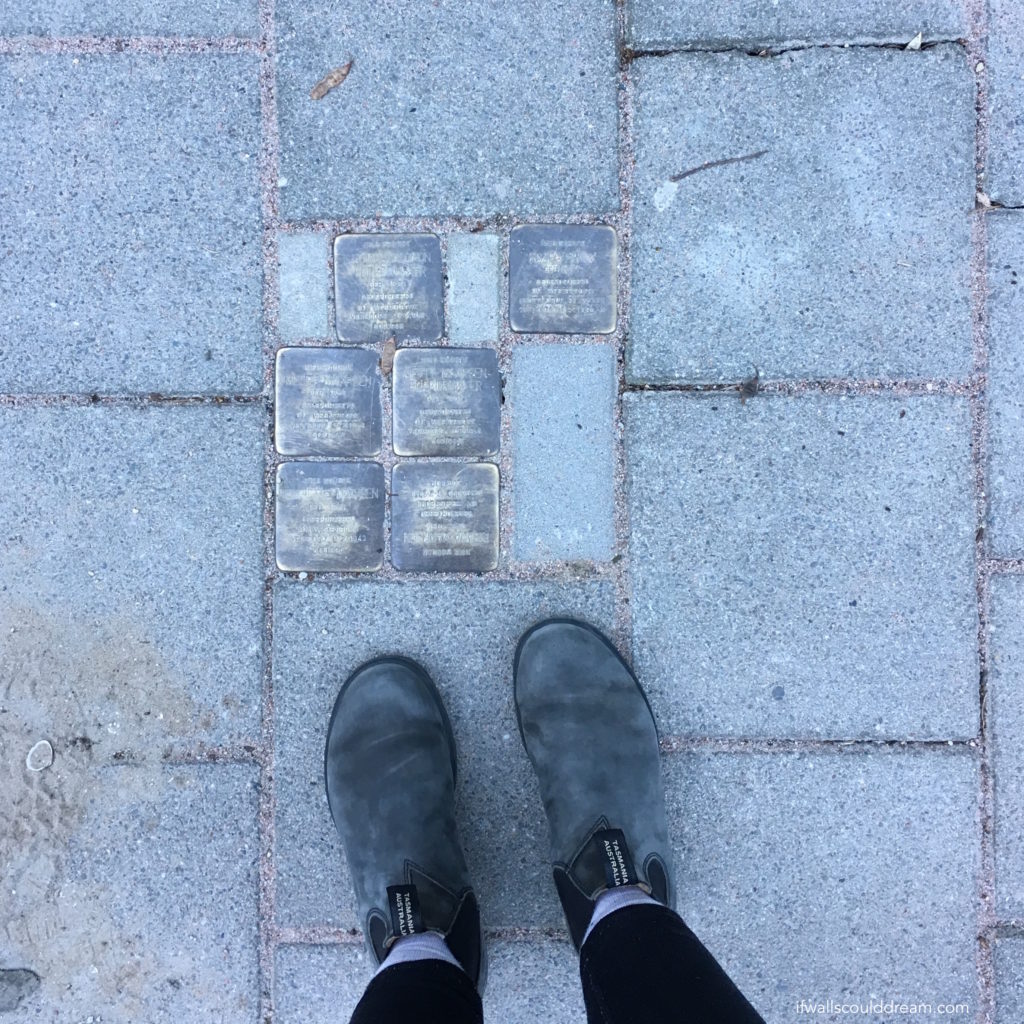
I love this memorial because you see it along your daily route, going to the grocery store or something and you notice it on the ground. It’s subtlety is its beauty and its heartbreak.
If the ground could dream… it would dream of never forgetting.
Vienna
I spent the second half of my travel break this semester in Vienna, Austria. I was visiting my mom’s friend Nicola and she was such a great hostess! I love getting to see cities from a local’s perspective. I got a public transportation pass and spent the days exploring the city while Nicola was at work. From trying to see as many Adolf Loos buildings as I could, to getting icecream on Neubaugasse, I really enjoyed Vienna.
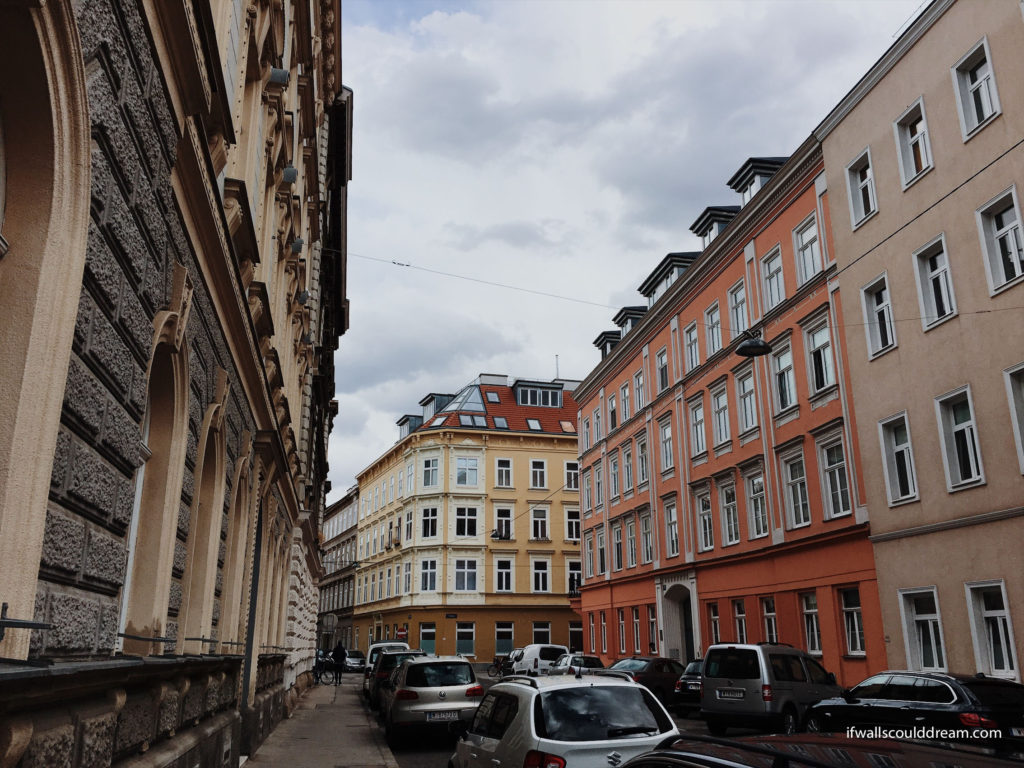
Schönbrunn Palace
The park around Schönbrunn palace was so beautiful. I didn’t go inside the palace but I did walk around the garden and up the hill.
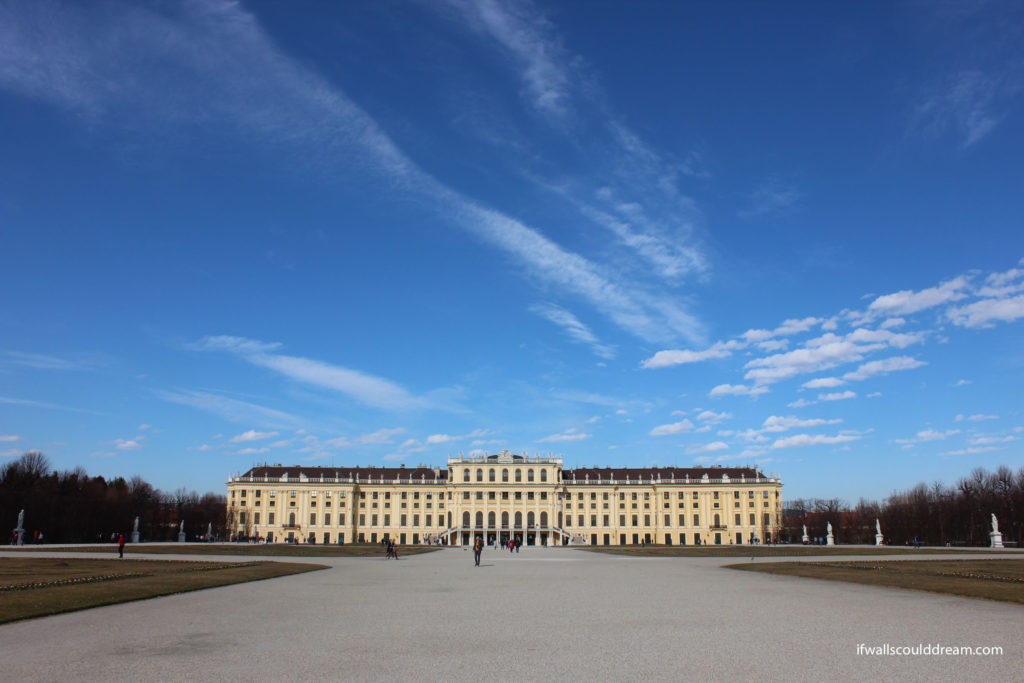
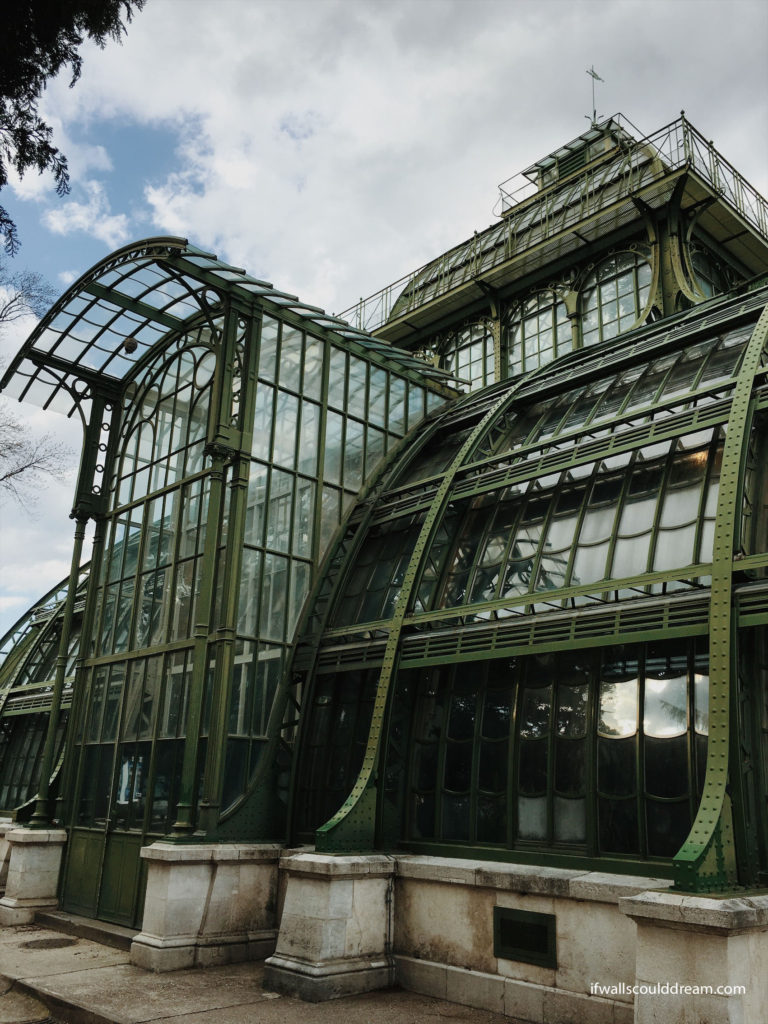
Wotrubakirche
Nicola took me to see this incredible church just outside Vienna. It’s unlike any other building I’ve seen in real life. A little bit Stonehenge, a little bit second year architecture student model, it was designed by Fritz Gerhard Mayr in the 1970s.
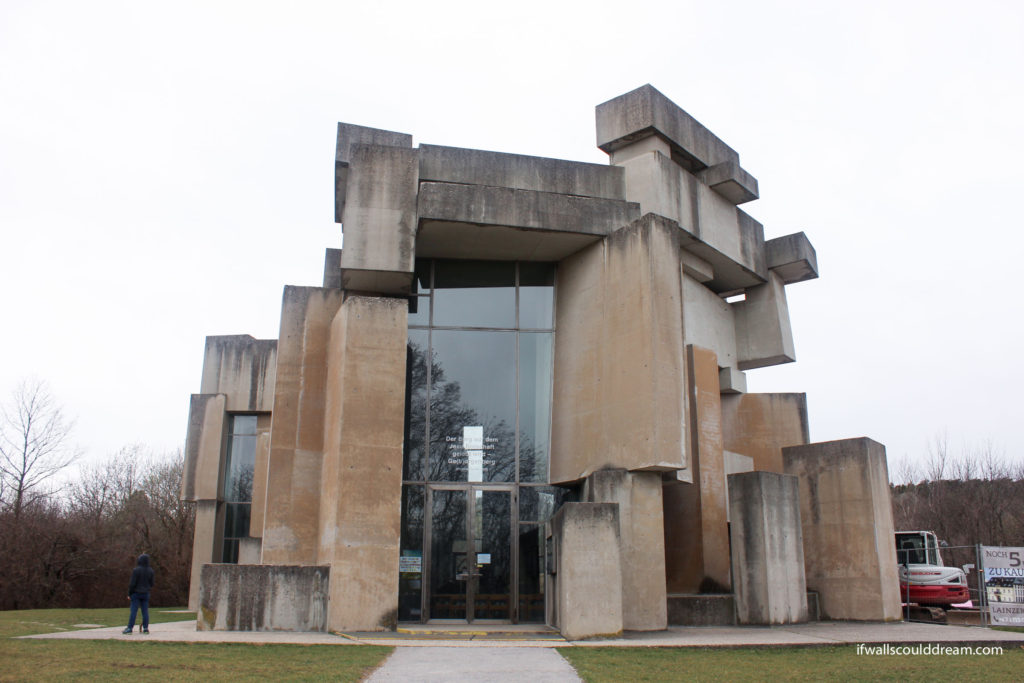
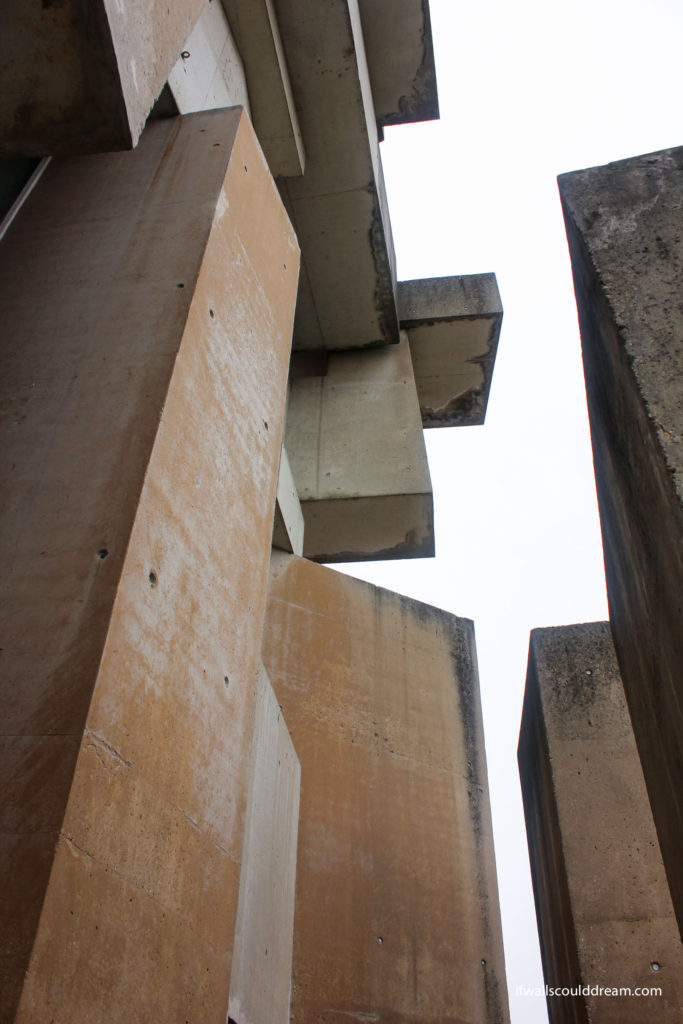
Palmenhaus
Nicola and I went to this adorable little cafe in a palm house and had the most delicious tea and cake!
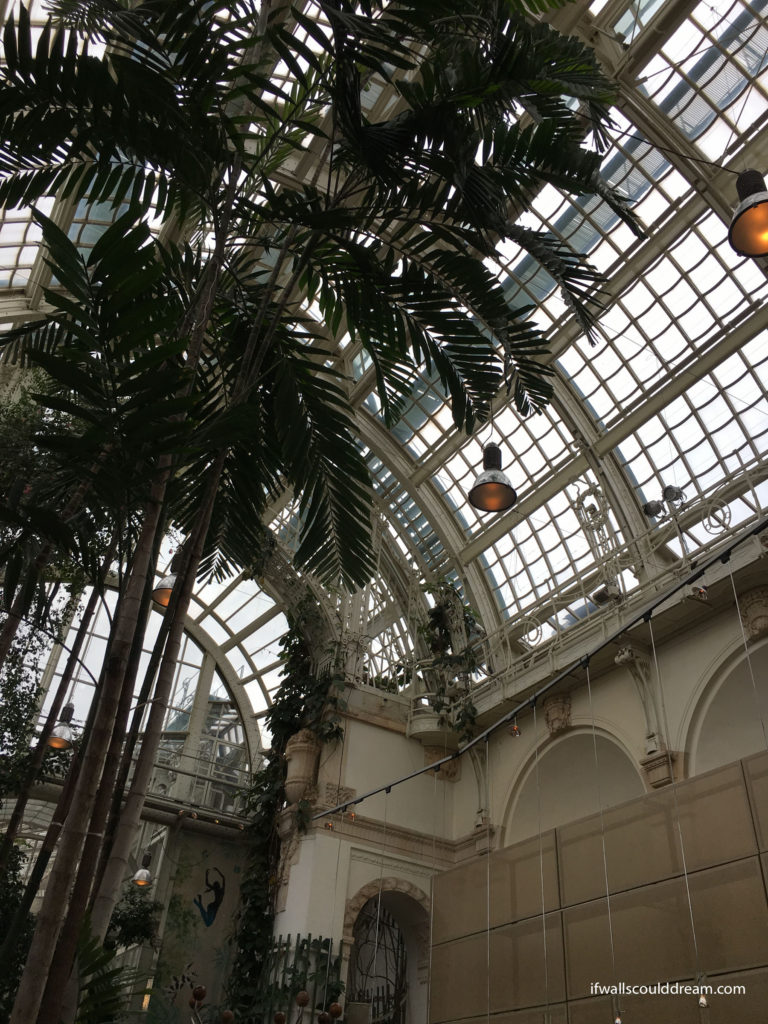
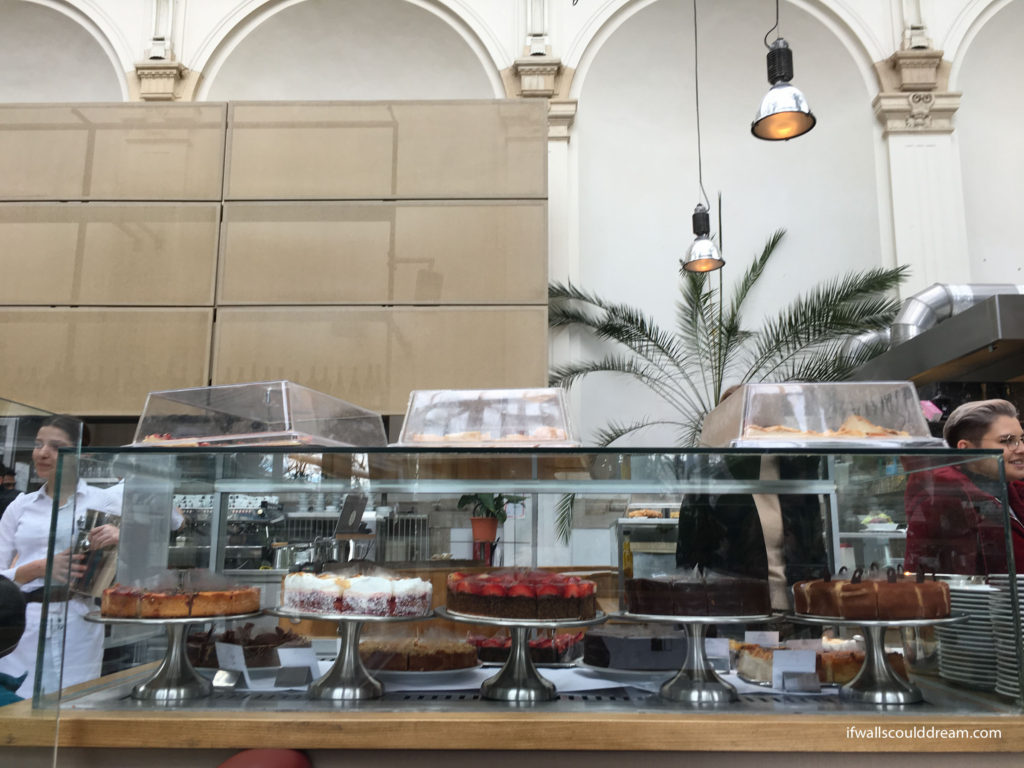
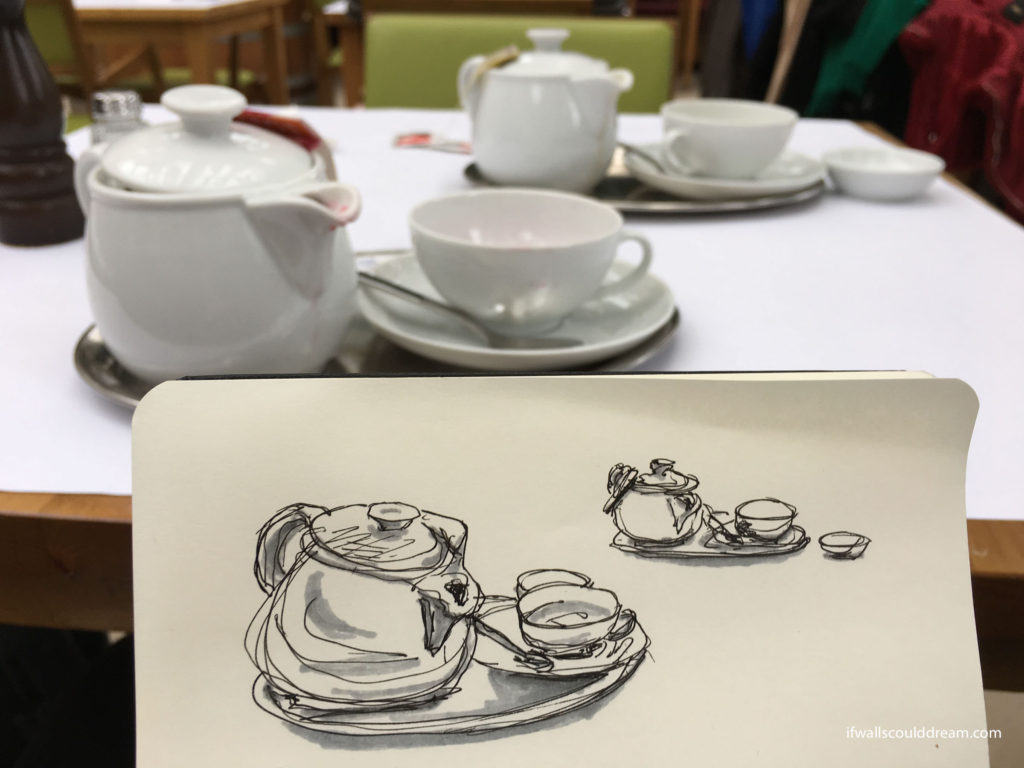
Hundertwasser House
Another random architectural pilgrimage I went on was to the Hundertwasser House. There were tourists everywhere taking selfies but it was a really interesting building and I’m glad I got to see it in real life.
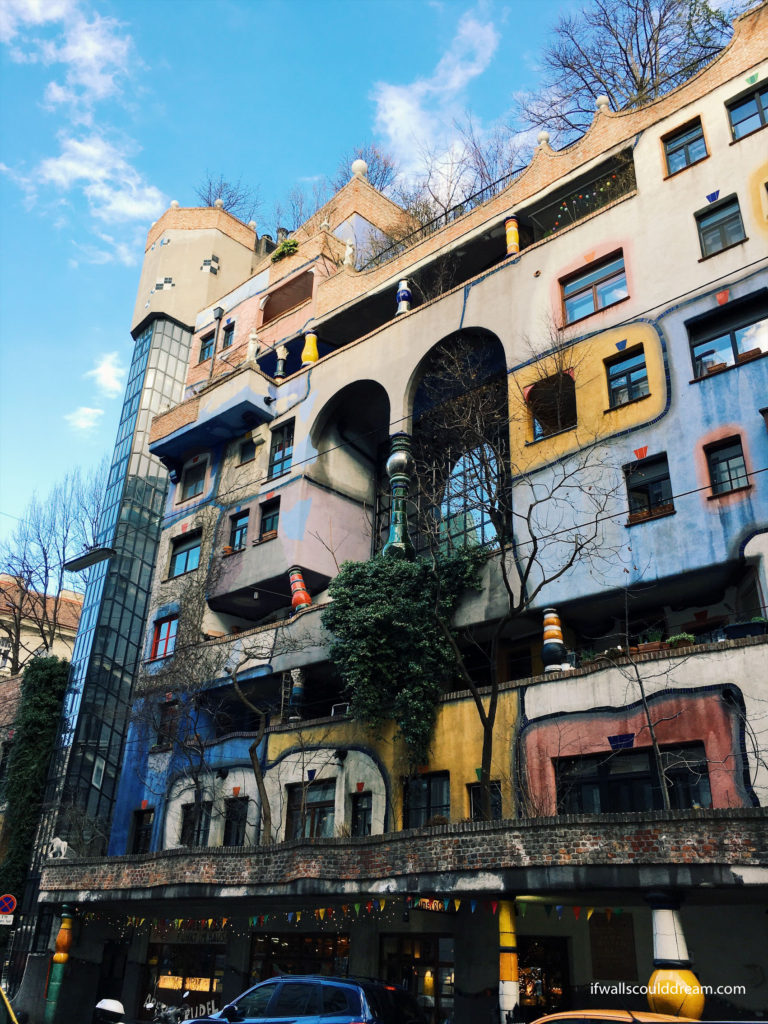
Vienna Opera House
I saw the outside of the Vienna Opera House with Nicola and it was so beautiful. I went to a classical music concert at the Musikverein, but I totally forgot to take a picture! I got a ticket in the standing section for only 5 euros! It was an incredible experience and I would advise anyone visiting Vienna to go. At first, it’s really crowded and uncomfortable but after intermission, a lot of the tourists leave and you can get a better view. Wear comfortable shoes though, it’s a long time to be standing!
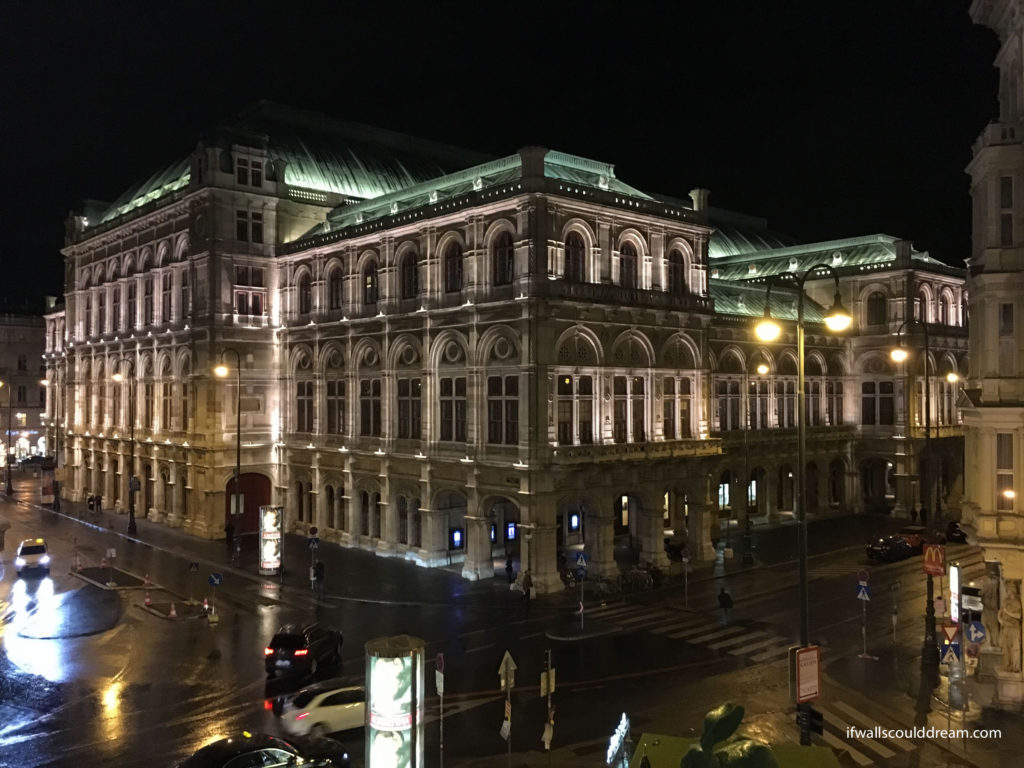
Vienna University
Zaha Hadid Architects designed this library for Vienna University. The entire campus is very new with lots of modern architecture and it was fun to see a Zaha building, it was just as crazy as I would’ve expected with lots of angles and curves.
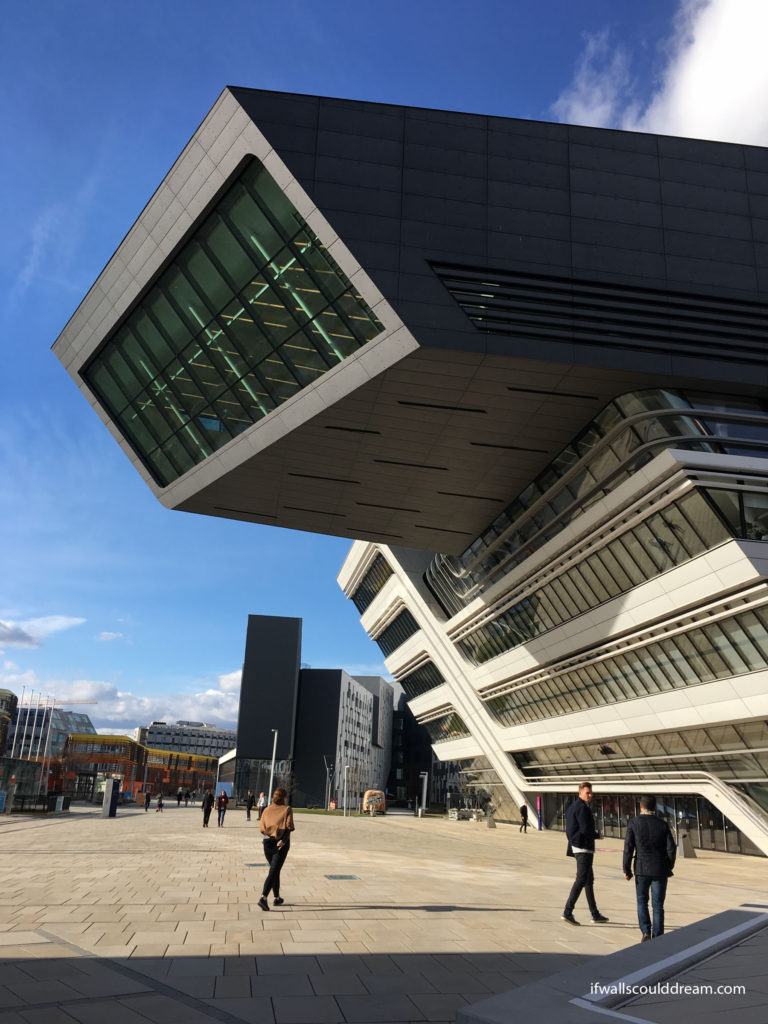
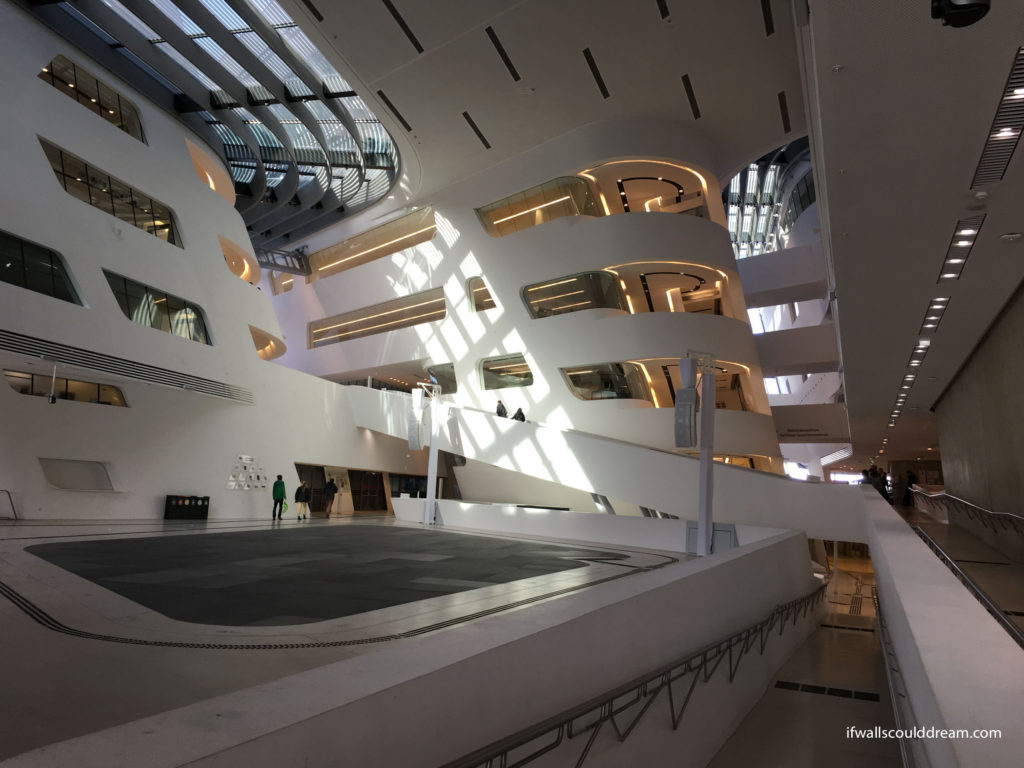
Leopold Museum
Museum Quarter in Vienna has a lot of wonderful museums. I visited the Leopold Museum and Architekturzentrum Wien (the Vienna Architecture Center) which had an exhibition about Denise Scott Brown.
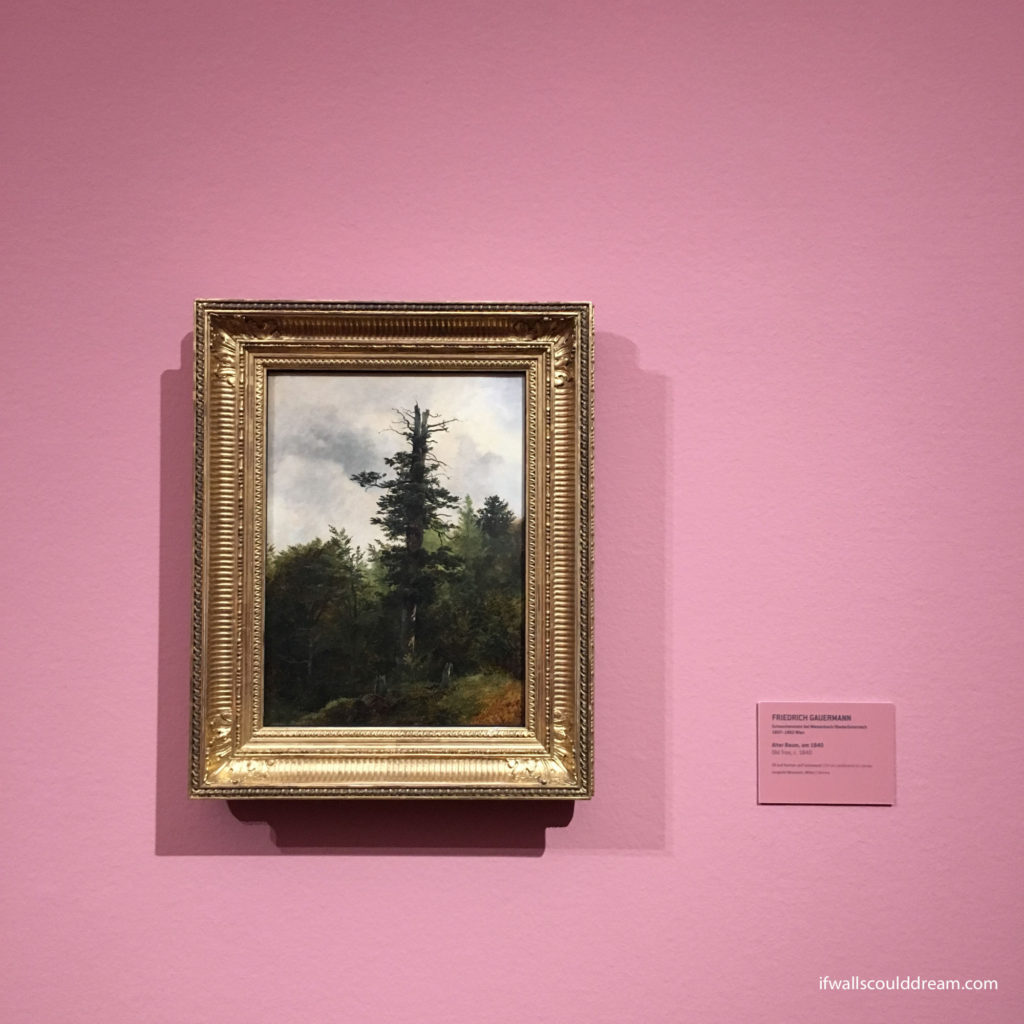
Gasometer
This unique adaptive reuse project converted four former gas tanks from the 1890s into a mixed use residential and commercial center. The brick facades were beautiful and so unique.
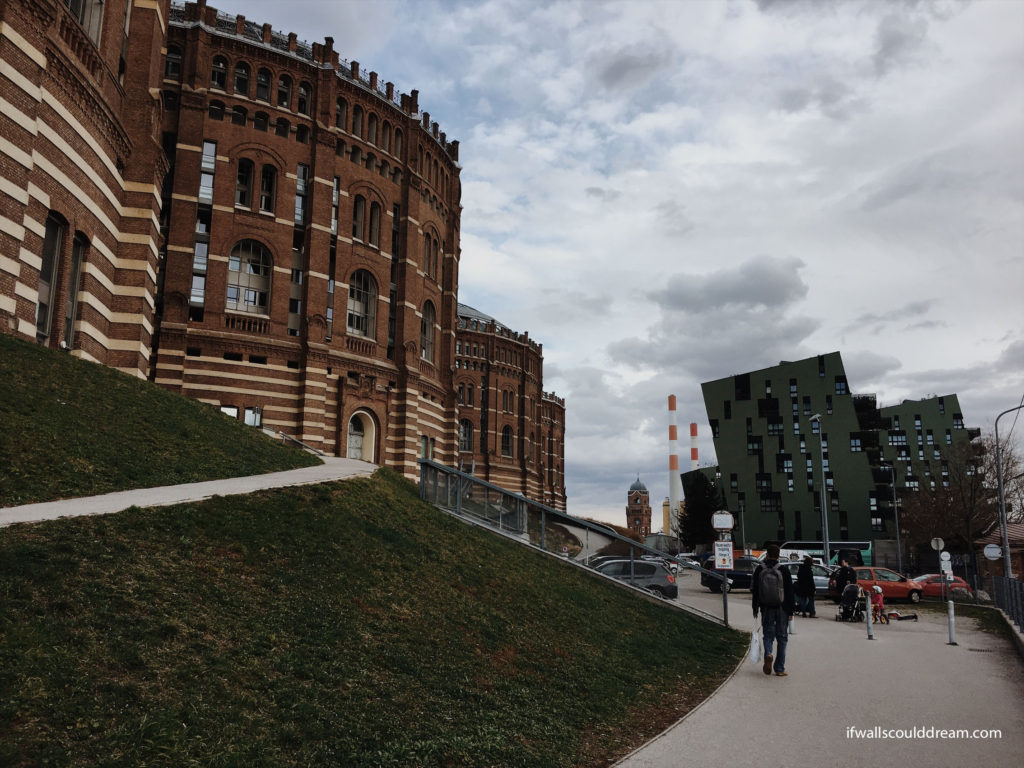
Erste Campus
There are hidden architectural gems all over Vienna! Another one to visit if you’re nearby is the Erste Campus.
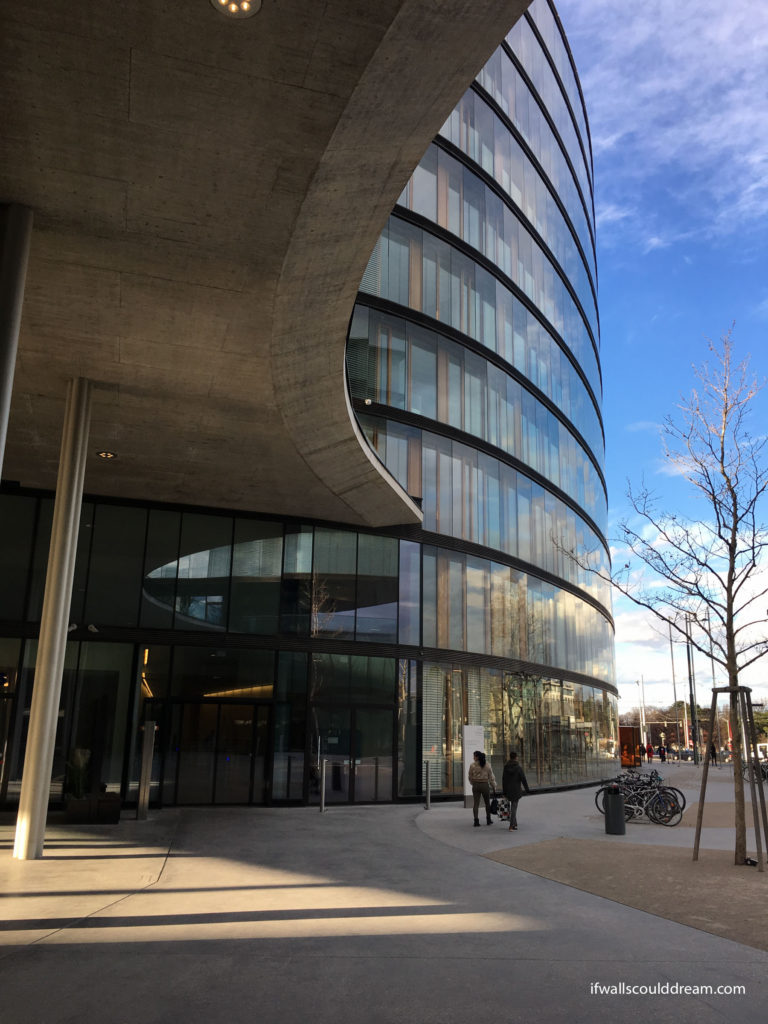
Belvedere Gardens
Beautiful sunset at the Belvedere Gardens. I loved my time in Vienna and thought it was such a beautiful and livable city.
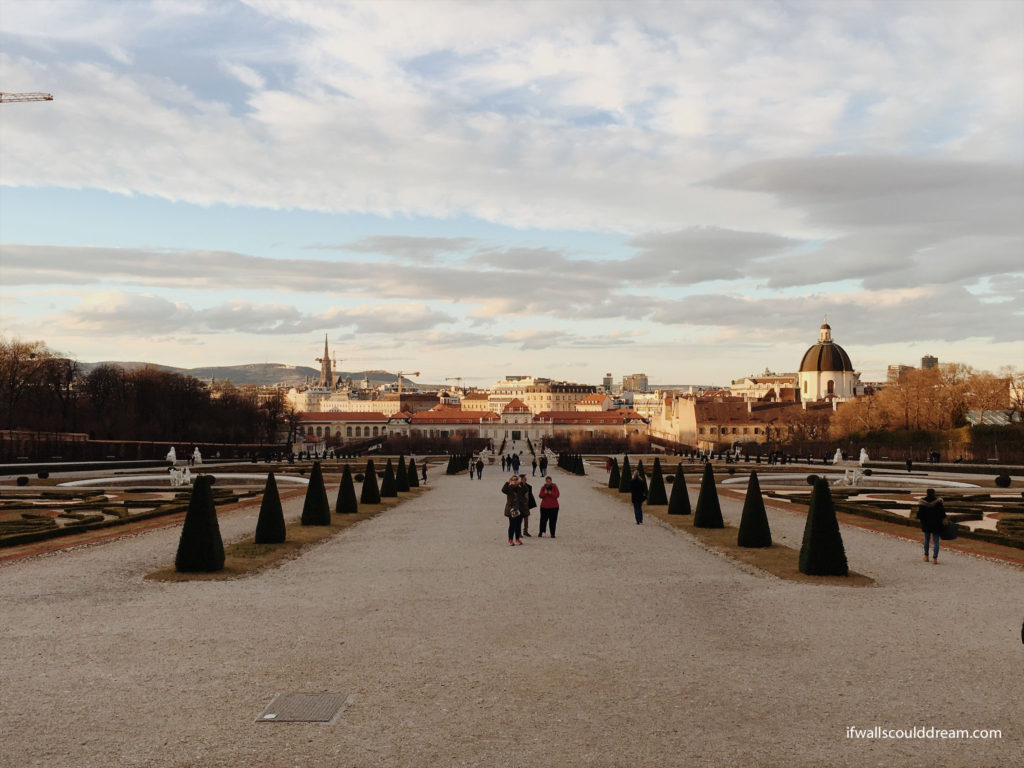
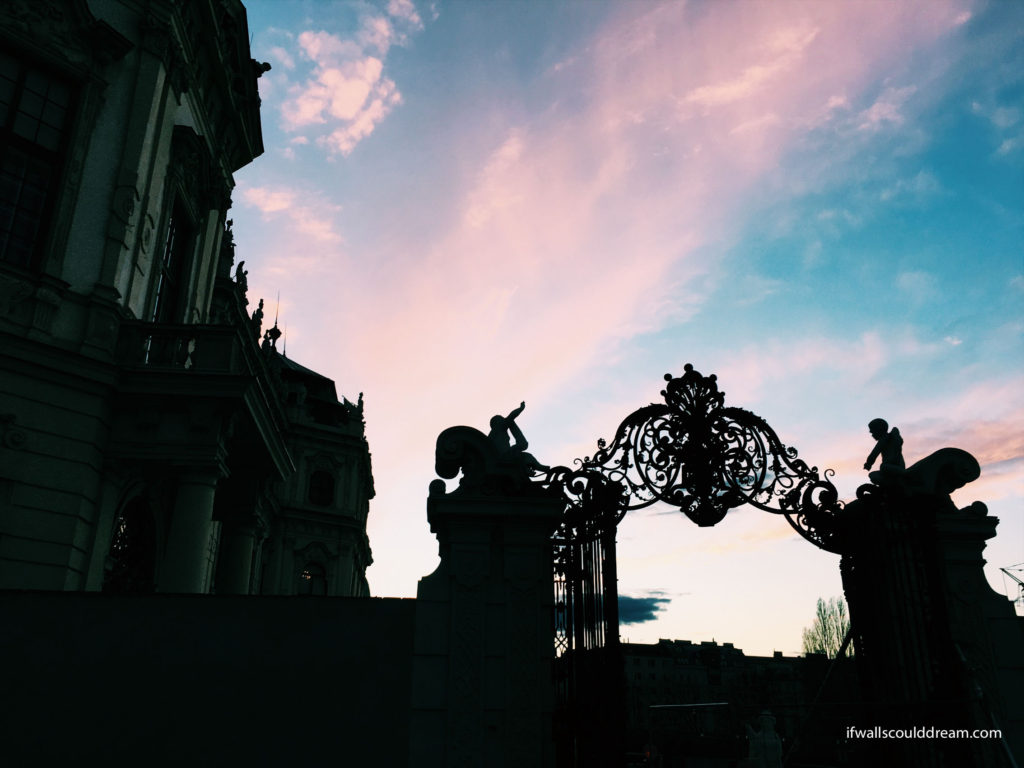
If walls could dream… they’d dream of a city full of palaces and beautiful architecture! And pretzels!
Toast?
I had been wondering why toast is so expensive and such a big deal here. I know that Denmark is famous for its open faced sandwiches called smørrebrød (and it’s probably offensive to call smørrebrød toast), but I wasn’t sure what the hype around toast was. Until today.
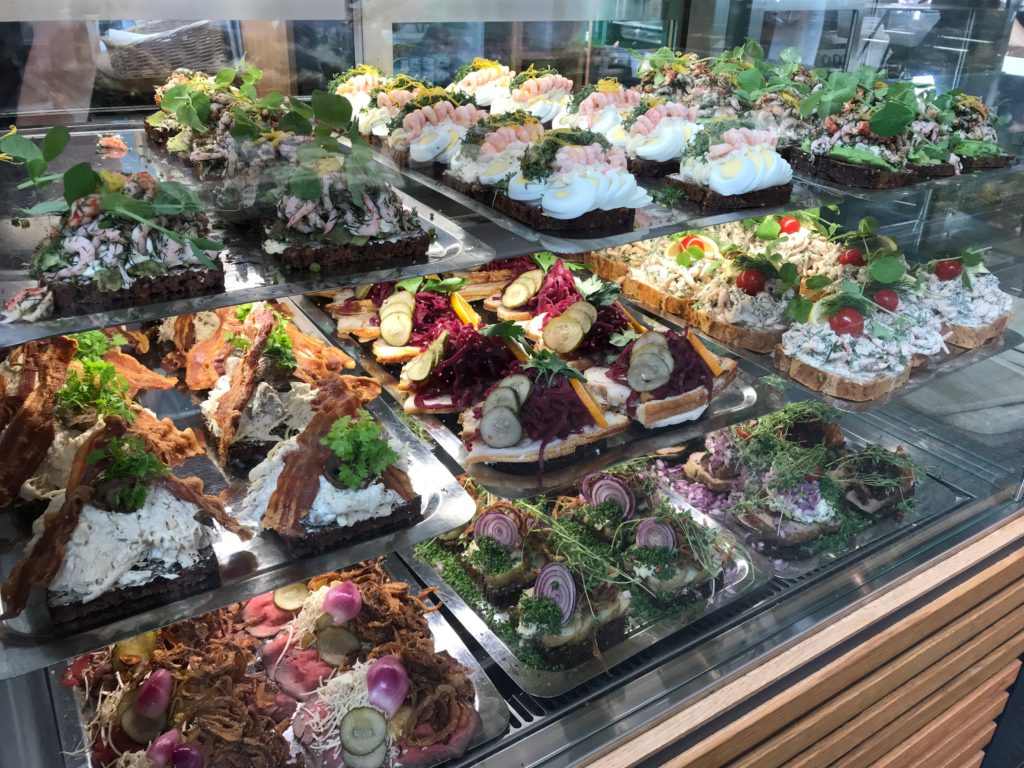
The church I go to has an open cafe after the service where they sell a little meal, usually hot dogs or waffles or something like that, and drinks. Today they were selling toast. I thought it was kind of boring that they were just selling toast but I decided to check it out anyways.
I found out that “toast” actually means a grilled cheese! And usually grilled cheese with ham too. Isn’t language funny. So if you order “toast” in Denmark, you’ll get a grilled cheese, but in order to get toast, you’d have to order a smørrebrød!
I was talking with a Danish friend about this and he thought it was funny we call it a grilled cheese because from the name, he would expect it to just be cheese, without bread. I guess it’s short for a “grilled cheese sandwich” which would be a cheese sandwich that was grilled.
My final question is, what do Danes call a single slice of bread toasted with butter and/or jam? Upon asking another Danish friend, I discovered that it’s a very complicated question to answer. Toasted bread is called “ristet toastbrød” (literally: grilled toast bread). If you put butter on it, it becomes ristet toastbrød med smør (grilled toast bread with butter).
Are you just as confused as I am? Here’s a handy chart:
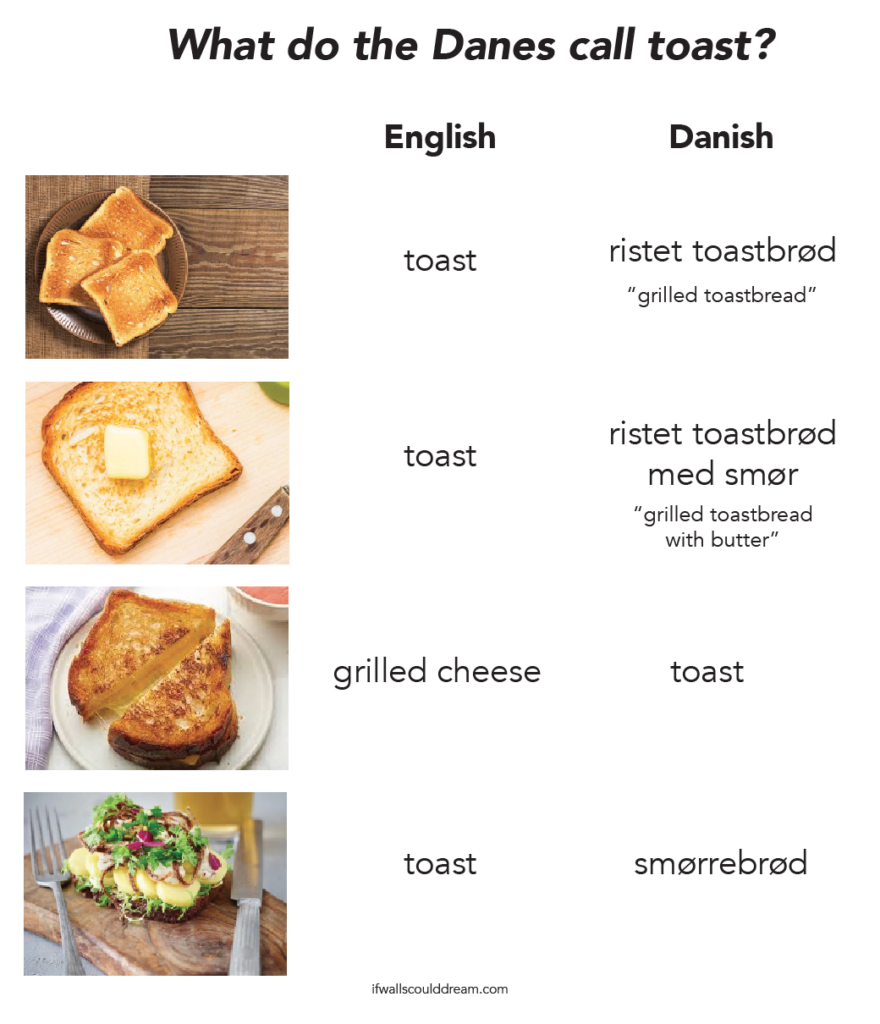
If you’ve read this far you must either be really into toast etymology, or really hungry, or both! So go make yourself a grilled cheese or a smørrebrød or a toast. Whatever you want to call it, I think we can all agree that it’s delicious!
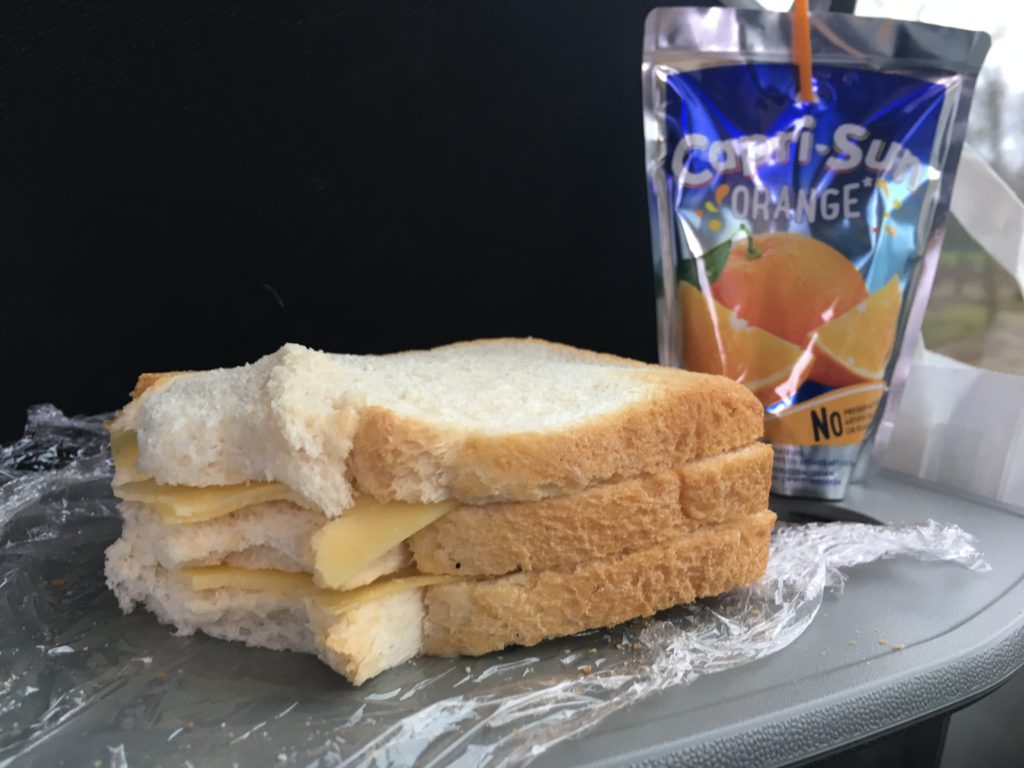
Another quirky story about cheese sandwiches before I leave you. On my study tour in the Netherlands this semester, we had to catch a really early bus and we didn’t have time to get breakfast so our hotel made us breakfast packs which was super nice of them but it was the most random food! We all got sandwiches with three slices of bread… Not sure if it was supposed to be three toasts or a sandwich and a toast or just a really big sandwich… and a capri sun and an apple!
If walls could dream… they’d dream of toast!
Copenhagen Zoo
It’s spring at the Copenhagen Zoo and there are plenty of adorable baby animals to see!
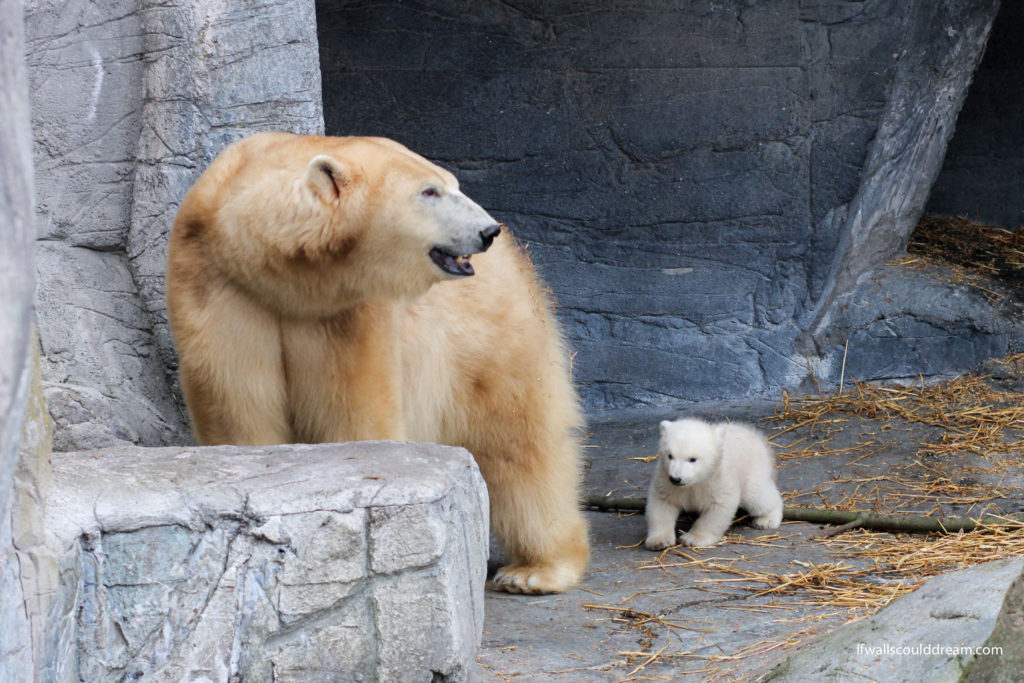
The baby polar bear definitely stole the show!
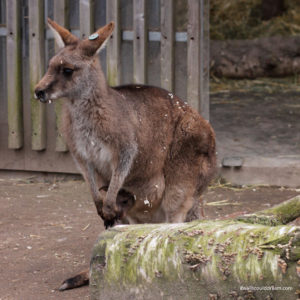
Look closely, can you see the joey in this momma kangaroo’s pouch?

These lion cubs are a triple threat!
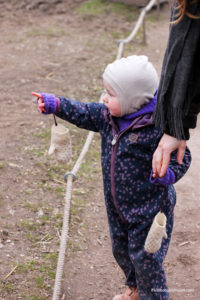
There were also plenty of adorable human babies in their cute little snowsuits!

No red panda babies, but the adults are just as cute!
If walls could dream… they’d dream of visiting the zoo!
Langelinie Restaurant Design
My architecture studio project for my fall semester at DIS Copenhagen was to design a restaurant on the Langelinie pier.
The main idea for my design is a long ramp-like roof that allows people to hang out in the sun (in the summer) so that no public space is lost in making this restaurant. Tucked under the ramp/roof is a small icecream stand, bike parking, public restrooms, and the main restaurant.
One thing I played with in this design was the rhythm of the built elements. Taking ques from the Barcelona Pavilion and Myyrmäki Church, I arranged the walls and ceilings under the ramp/roof in an almost haphazard way, creating a variety of different unique spaces. If this building were a piece of music, the ramp/roof would be the steady beat and the restaurant walls/ceilings would be the varying melody.
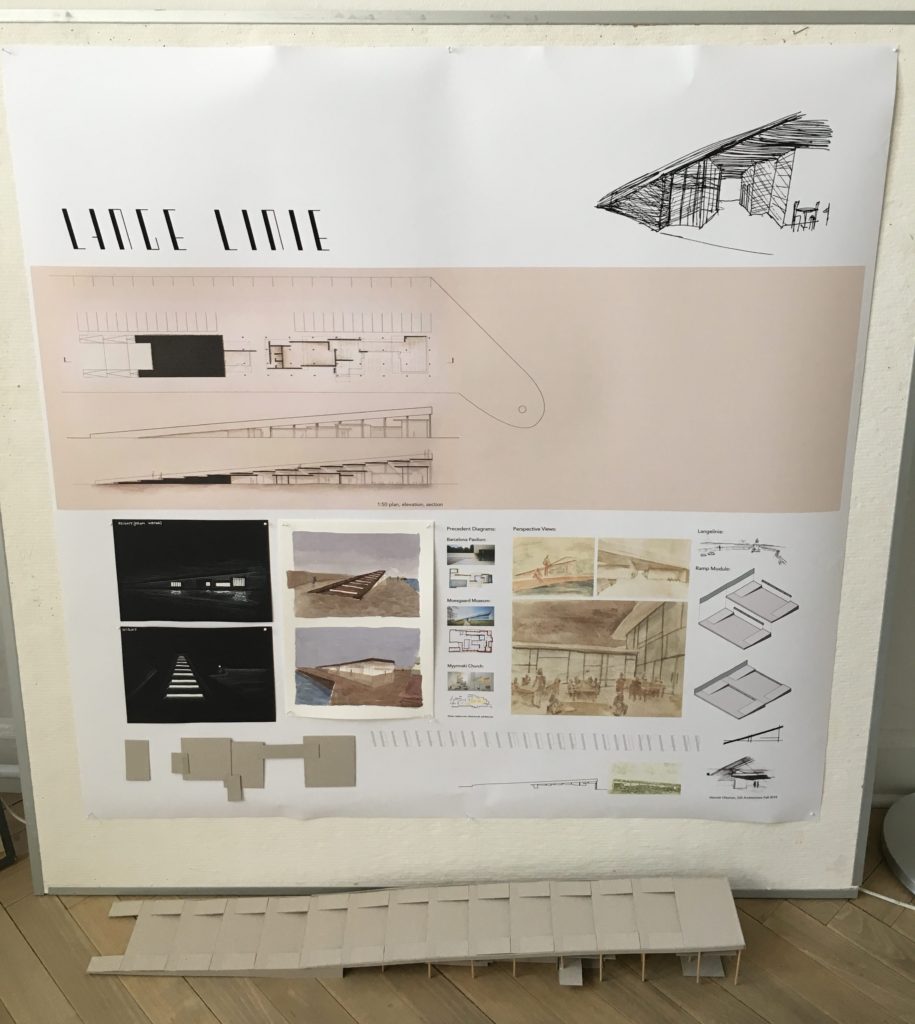
I had one of the most fun and memorable studios ever this semester thanks to the wonderful people in my studio and our amazing professor, Søren. I learned a lot this semester. My watercoloring improved a bunch. I learned how big a meter is. But most of all, I learned how to let go of my expectations for the end result and trust the process the get me there. I don’t know how to explain it really, but I’m not as intimidated by a blank piece of paper and not so worried about making mistakes.
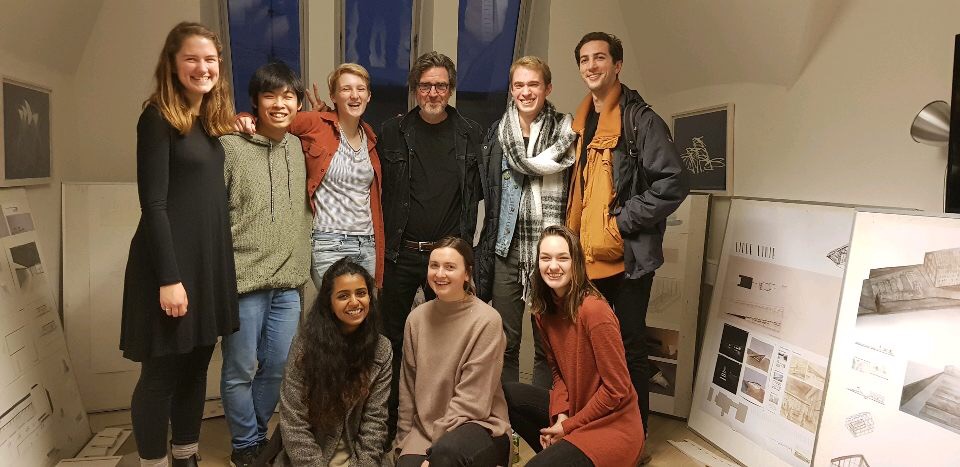
Me, Vi, Theresa, our professor Søren, Patrick, Eric,
Navaya, Ally, Annie, and Clancey (not pictured)
If walls could dream… they’d dream of sunny summer days at Langelinie pier.
Heidelberg Castle
I think Heidelberg is my favorite castle that I visited in Germany. It had beautiful architecture, lots of interesting stories and fun facts, and had a nice ratio of castle to ruin.
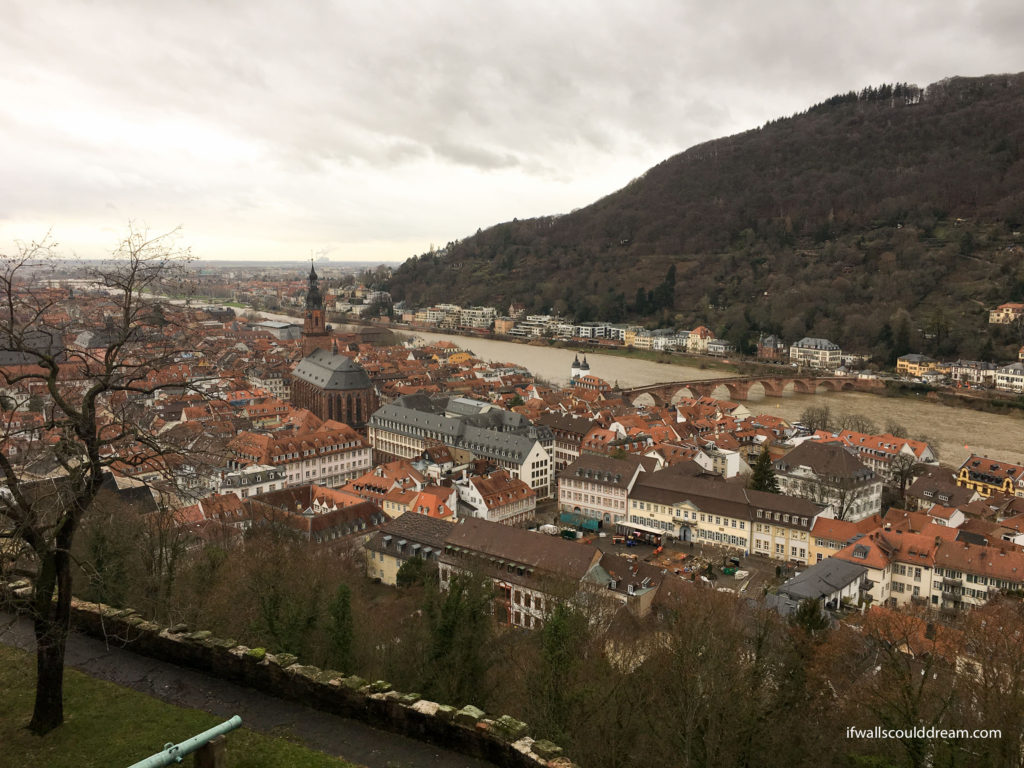
This facade in the castle was designed with sculptures of the royal family to show the family’s power.
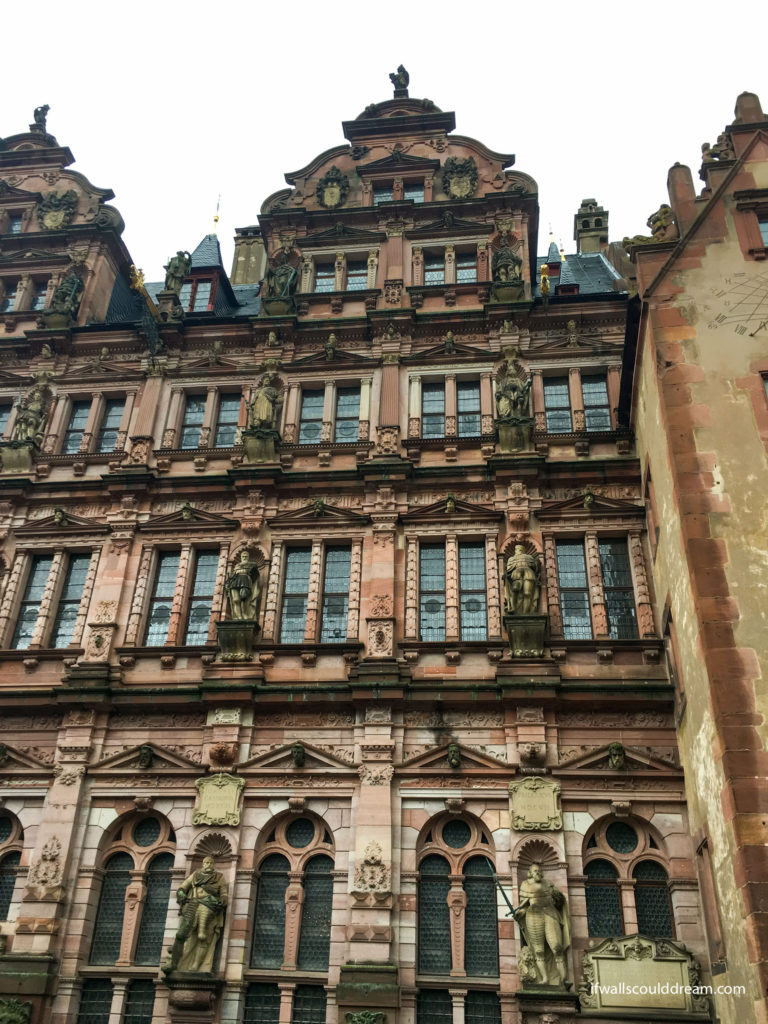
Frederick V married an English princess named Elizabeth and to impress her, he built a round theater, like the Globe theater, at Heidelberg Castle. What’s left of the theater can be seen on the left side of this photo.
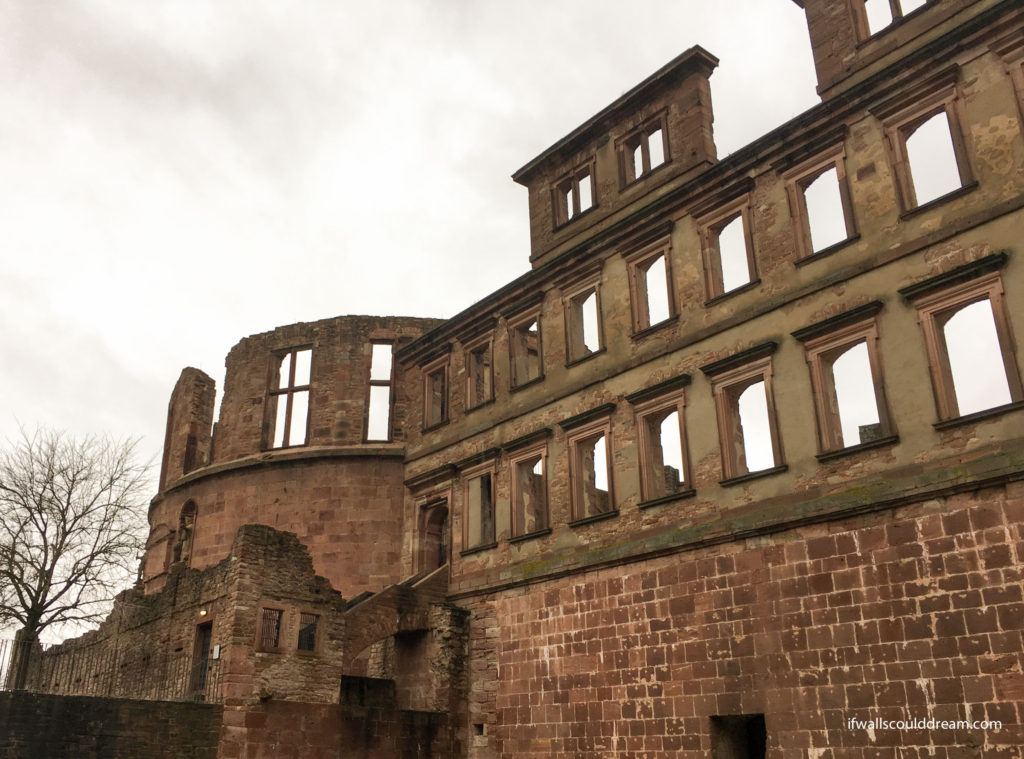
I love how layered this castle is. It’s obvious that it was built over time in a variety of styles. However, it is all united in a similar red stone color. I’m sure these walls have lots of stories to tell!
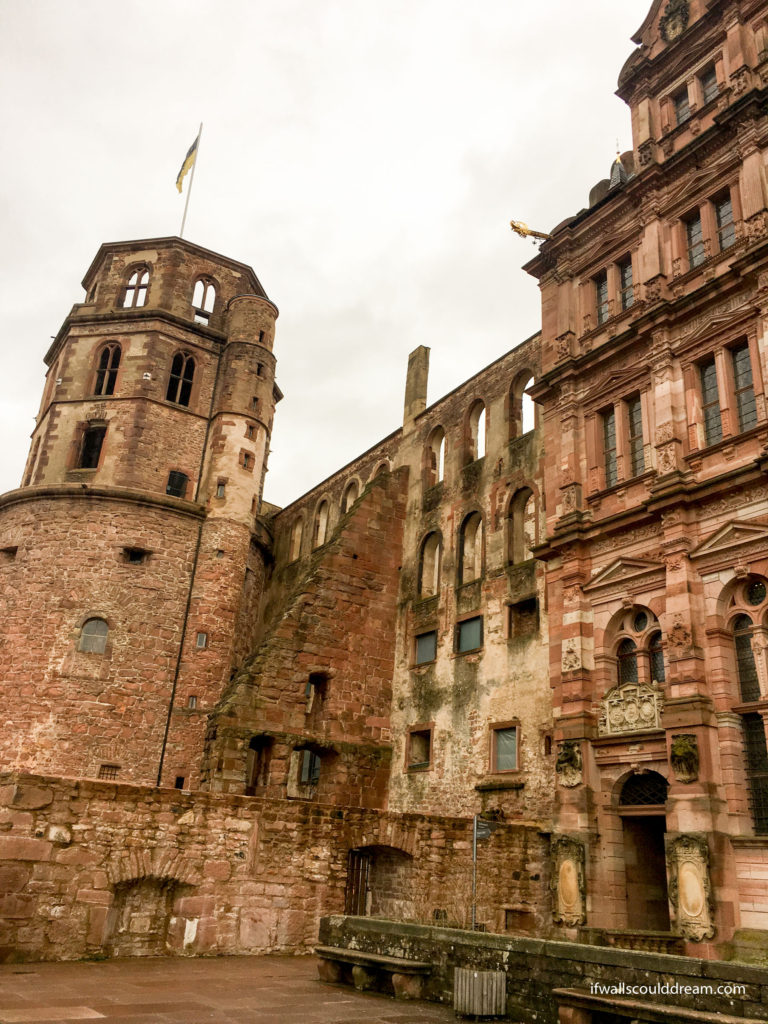
Castle toilets were originally built overhanging the exterior wall so that the waste would fall directly into the moat!
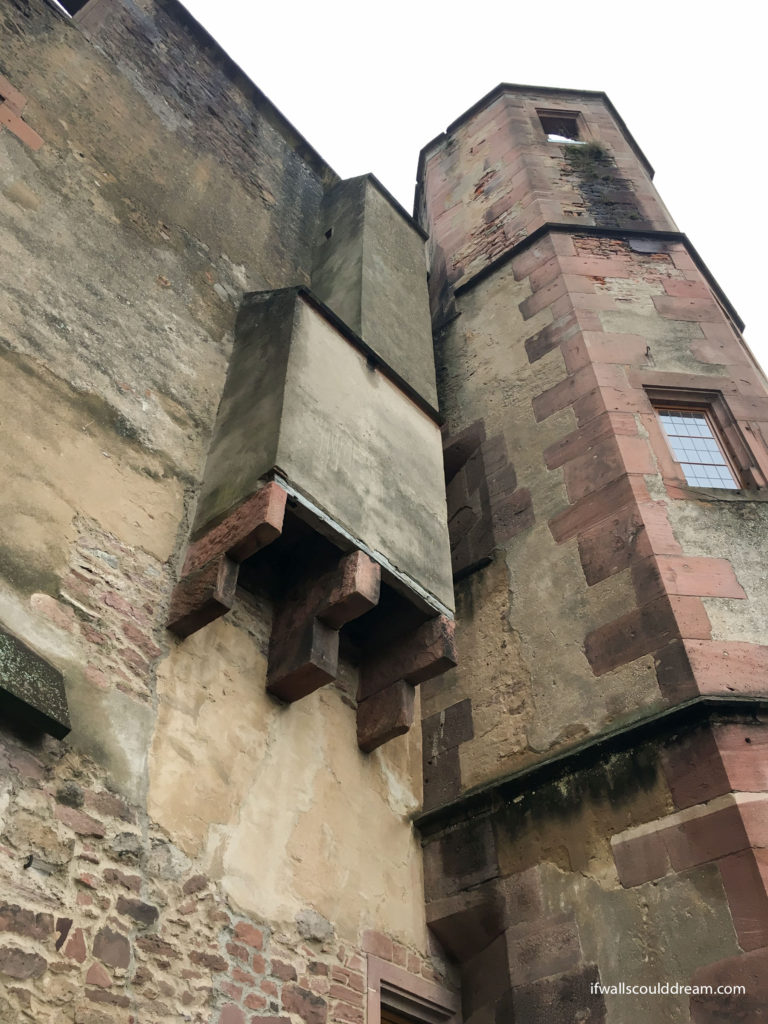
Hohenecken Castle Ruins
There are castle ruins everywhere in Germany. These ruins were a short drive from the Byroms’ house and after a quick hike up a hill, we arrived at this cool old castle. It’s amazing to think about what it would’ve been like in its heyday.
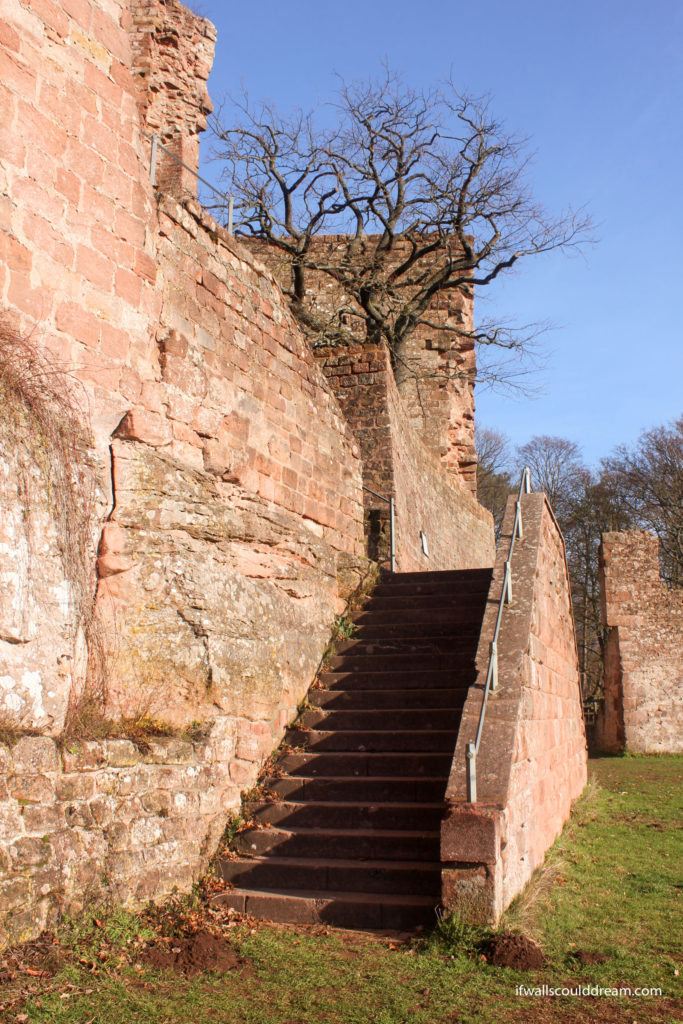
This part of the castle had the knights’ hall on the first floor and the chapel on the second floor. In the back corner was the kitchen.
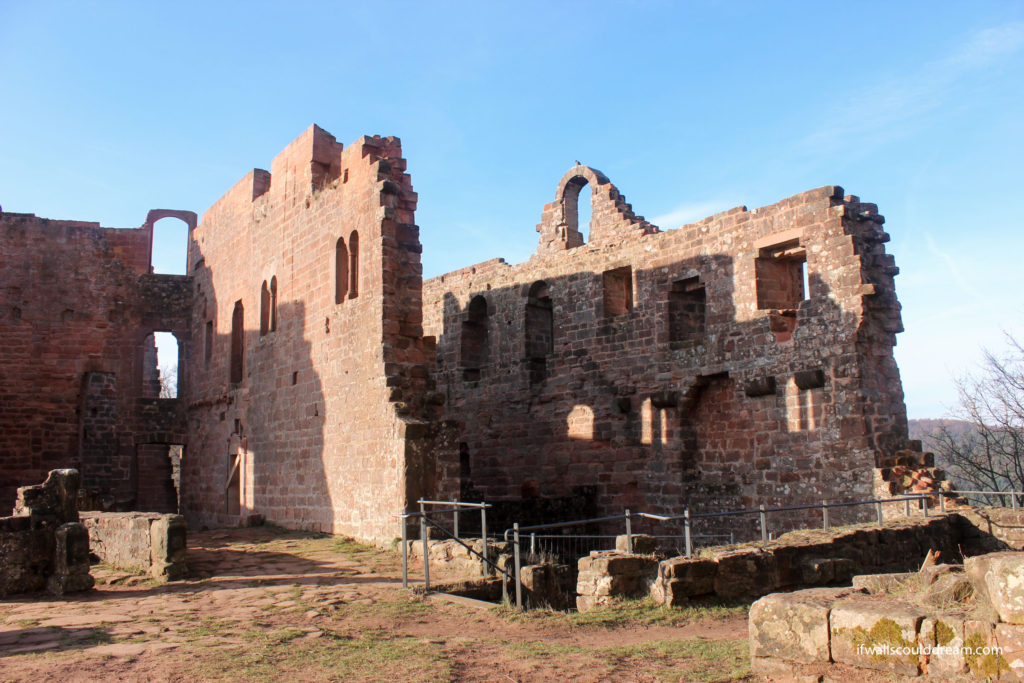
This castle was built in the 1200’s, altered and extended in the 1500’s, and destroyed by the French in 1688/89 during the war of palatine succession. It’s made of local red sandstone.
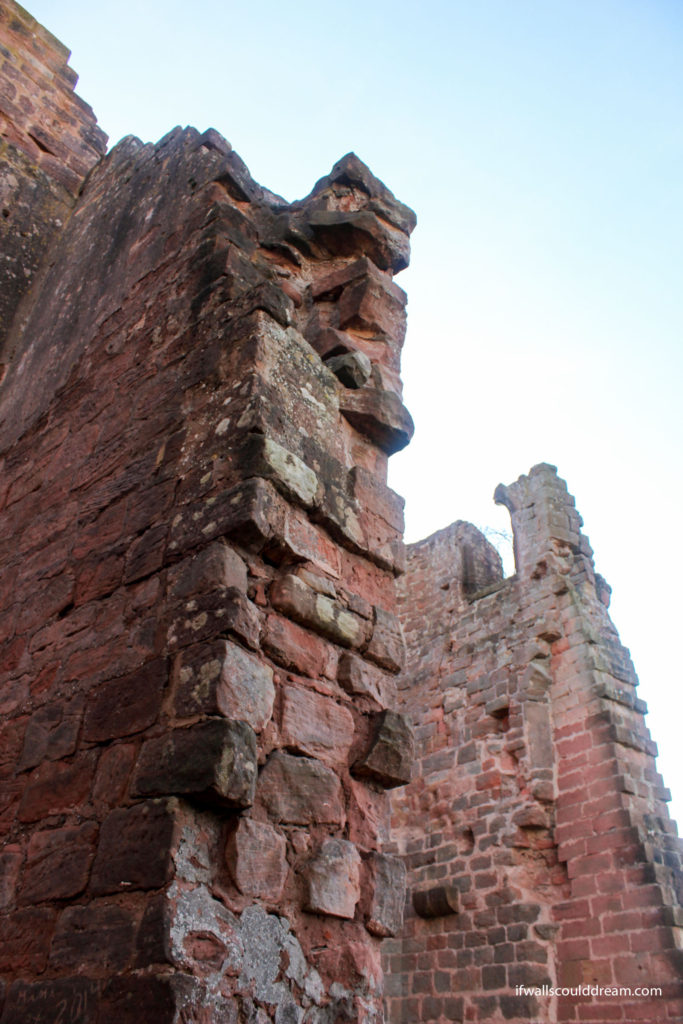
I was amazed at the variety of windows in the castle. Some of the windows even had a stone seat on the inside.
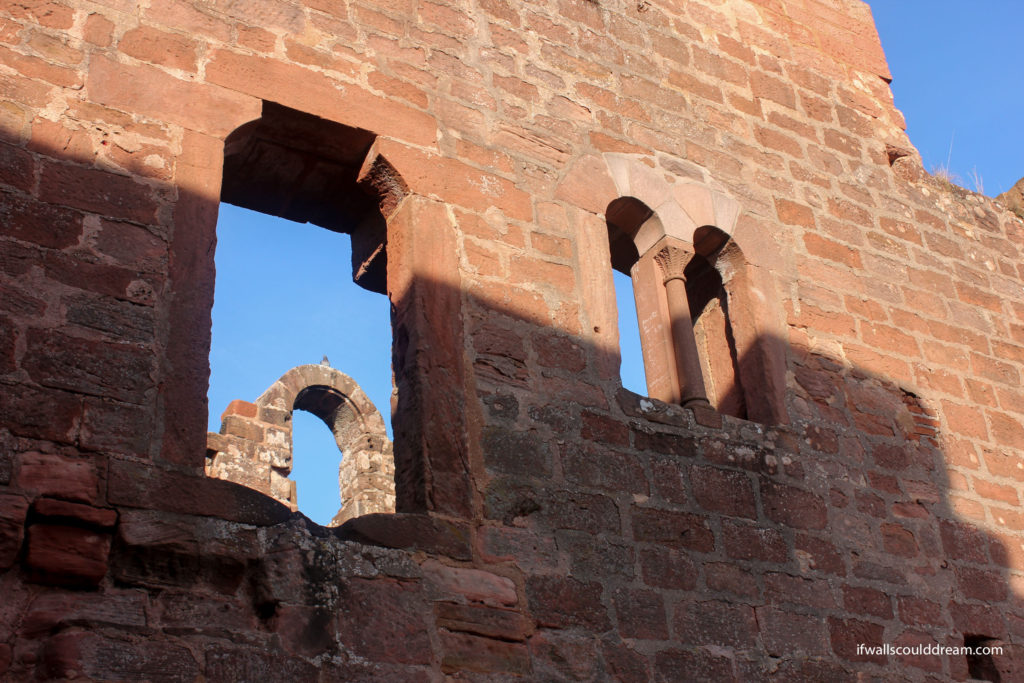
The view from the kitchen to the courtyard. There was a huge fireplace on the opposite wall.
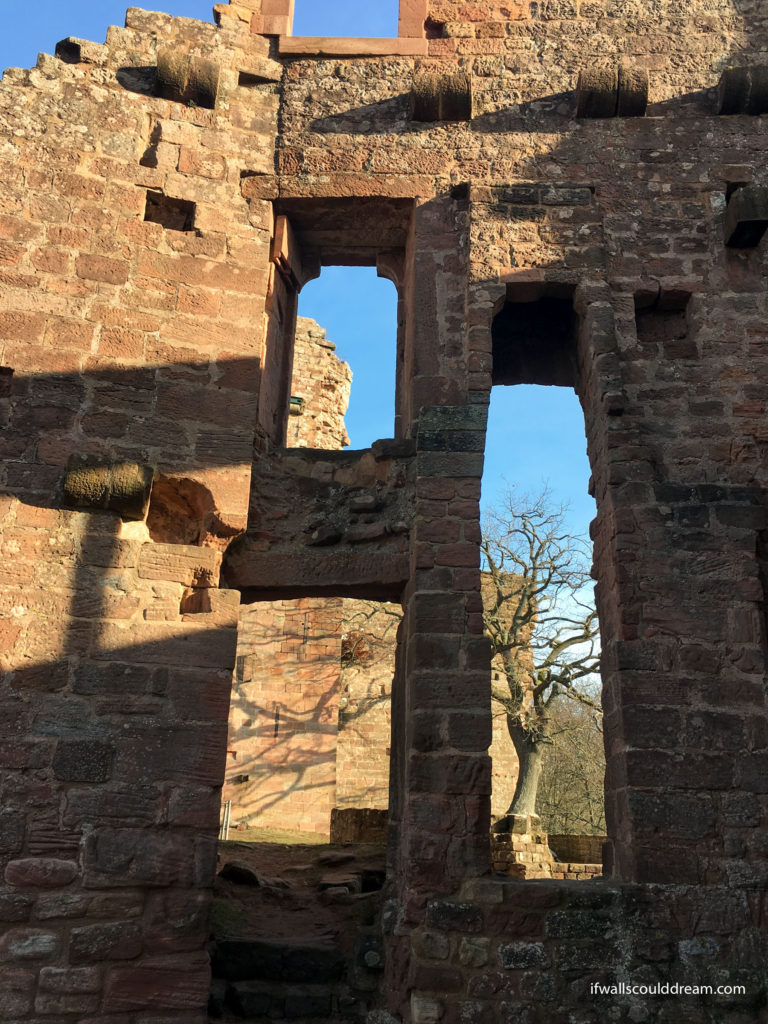
If walls could dream… they’d dream of 800 year old castles that are still standing!
